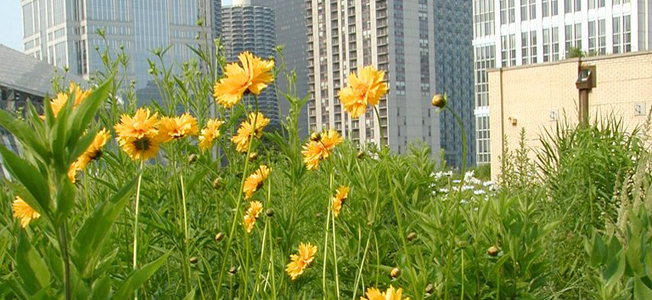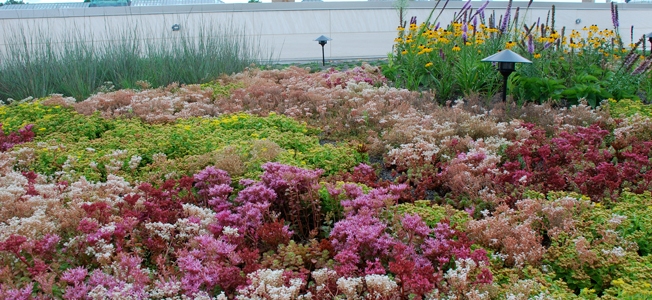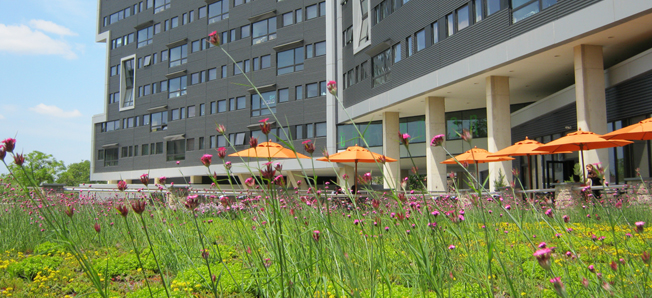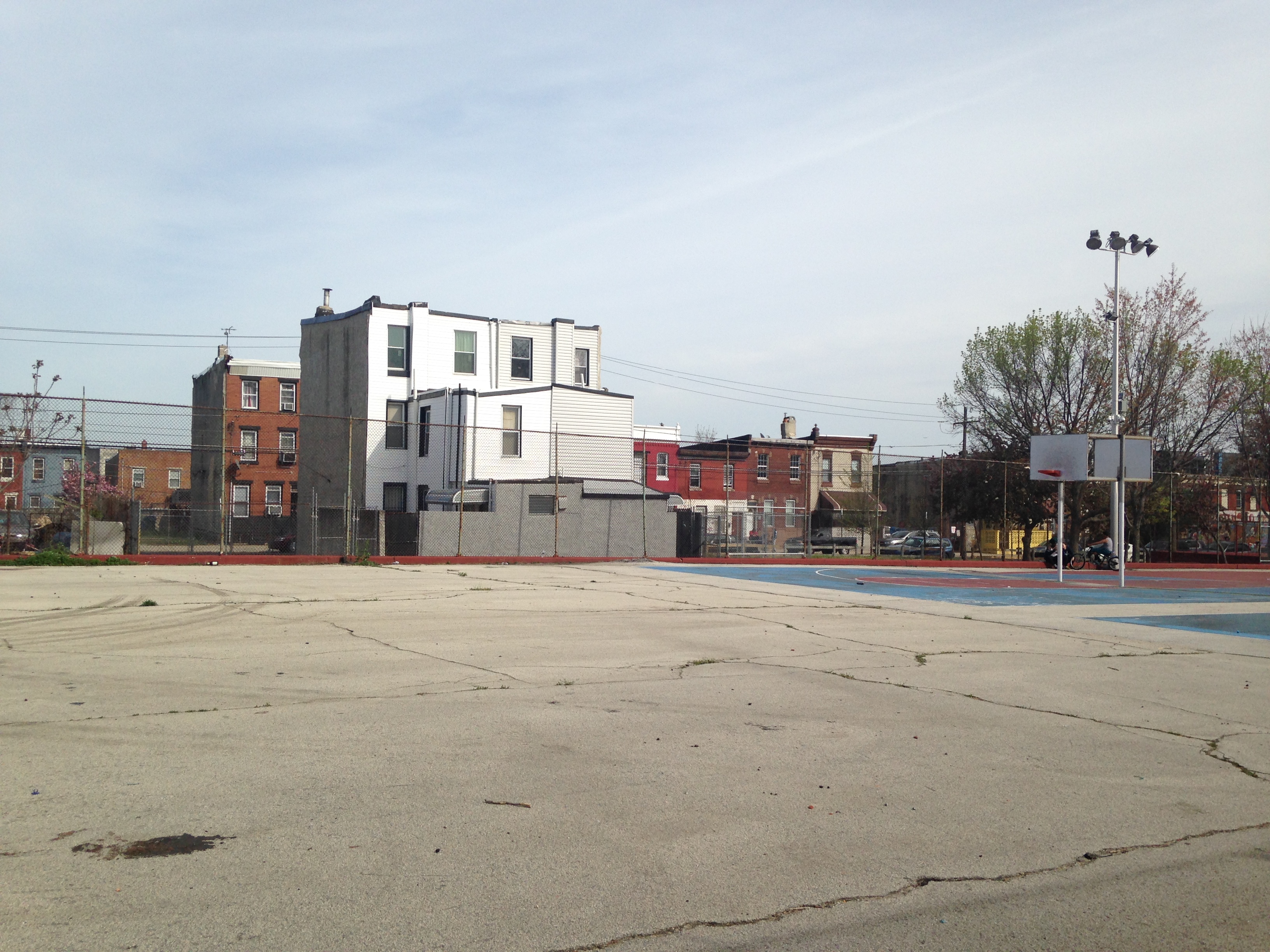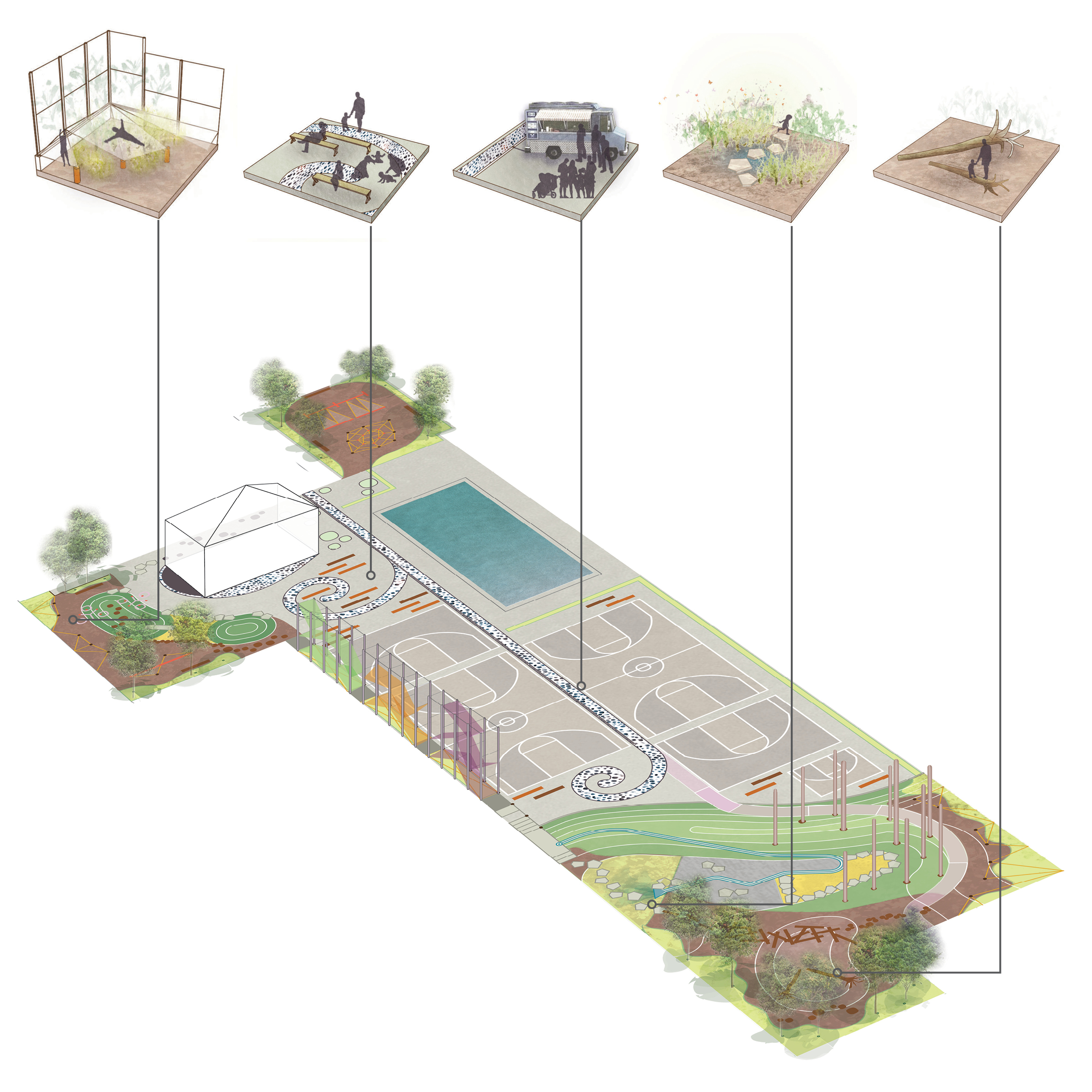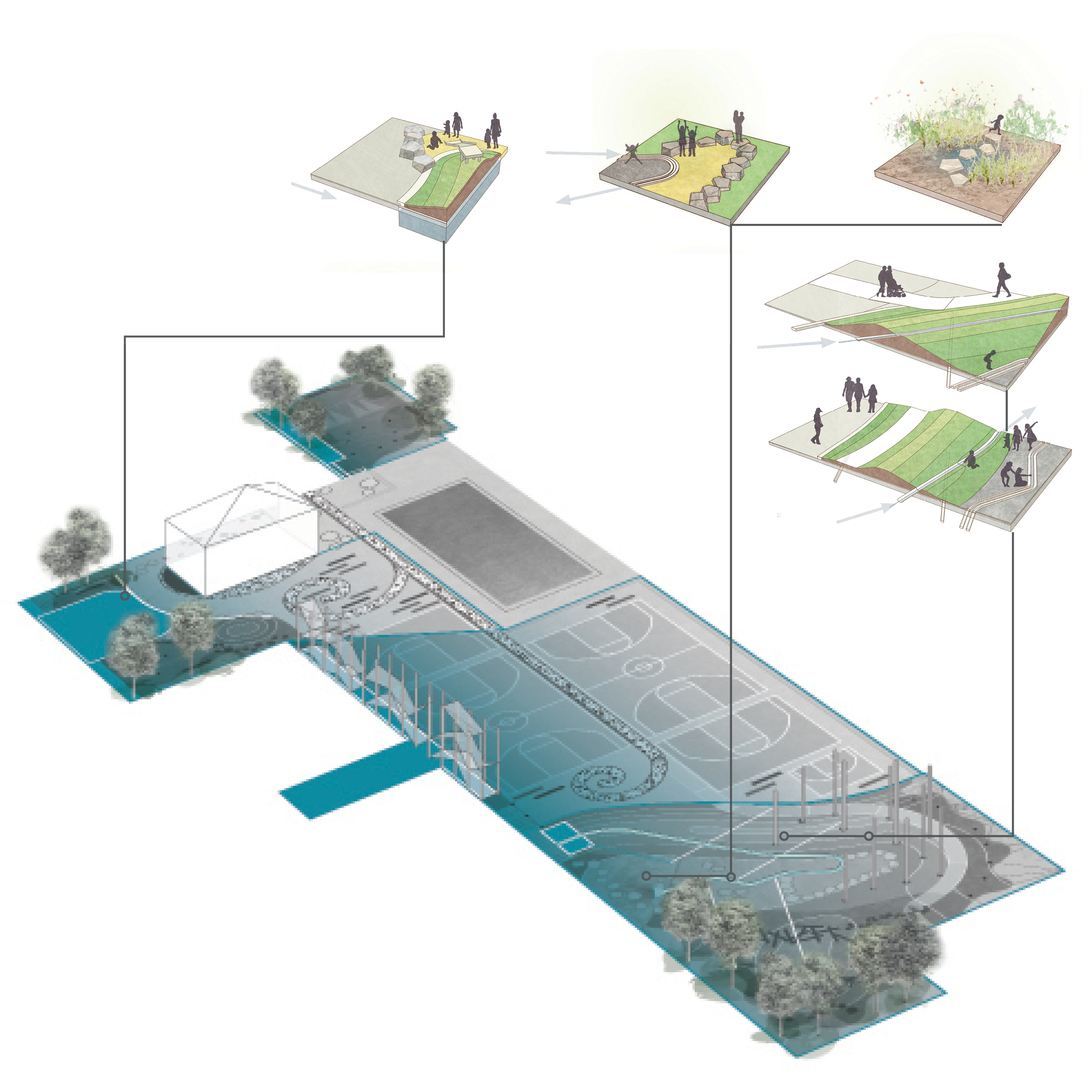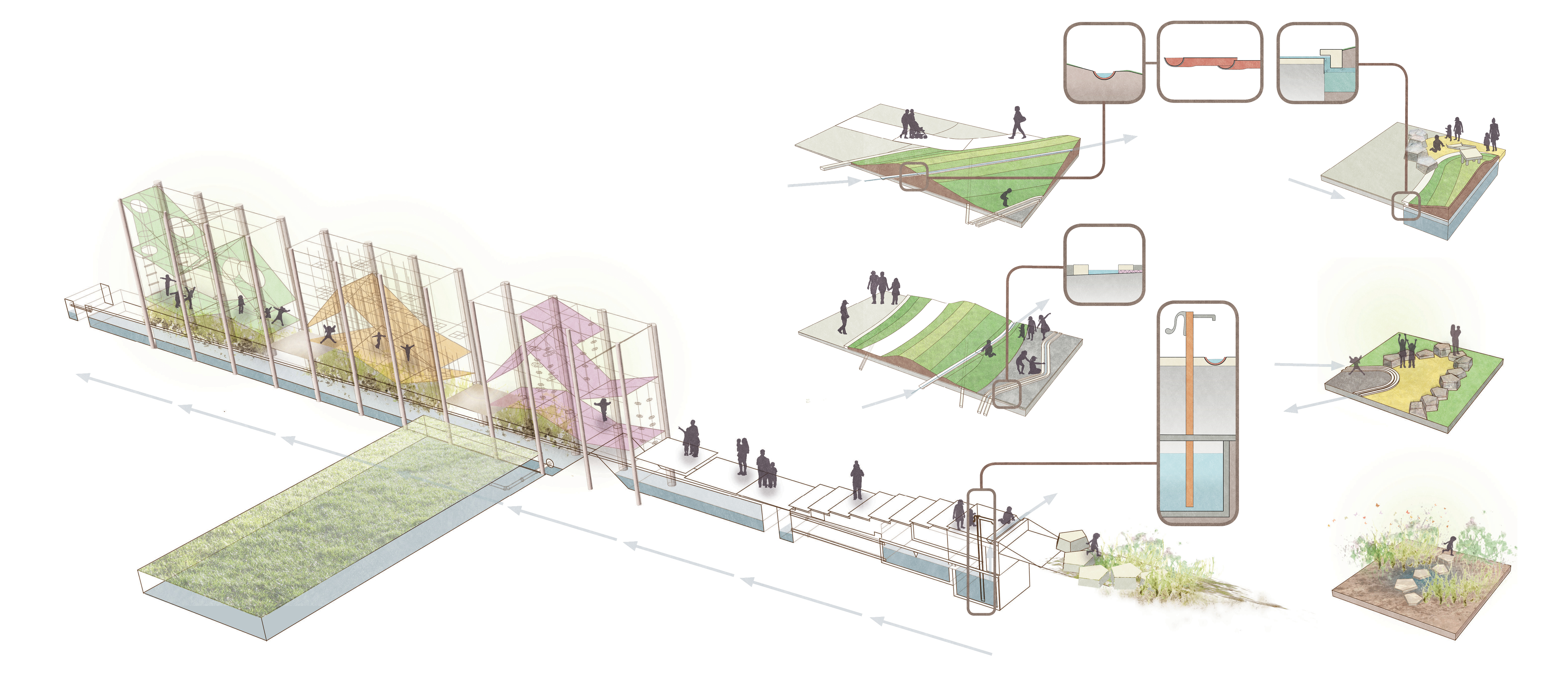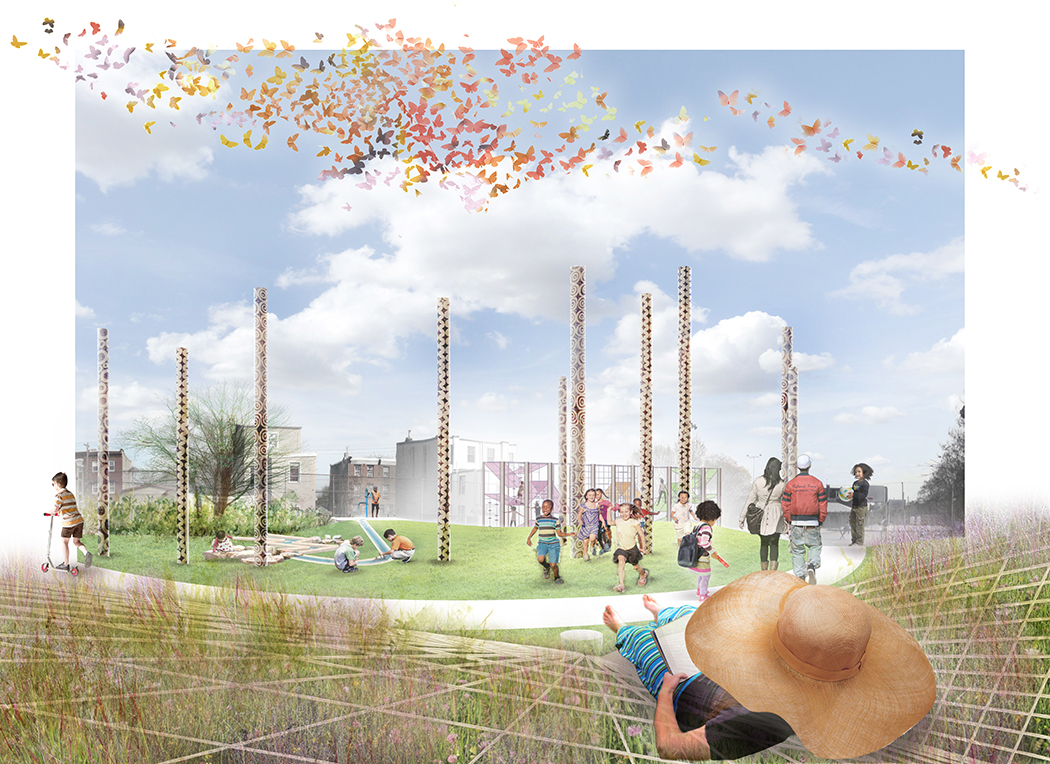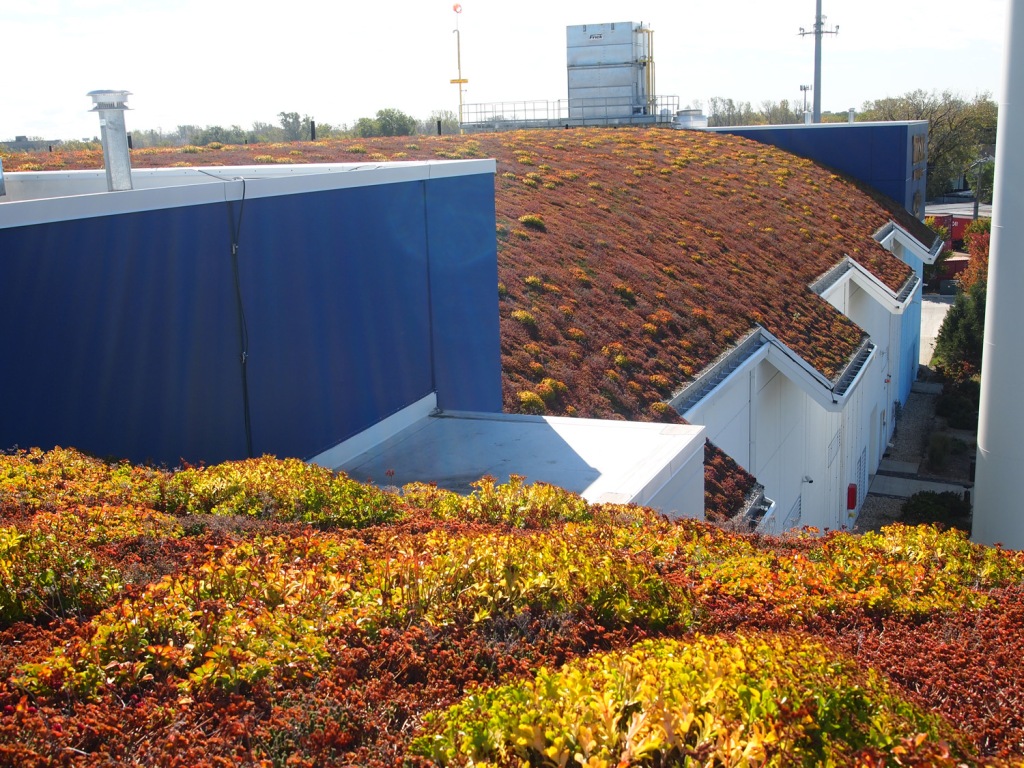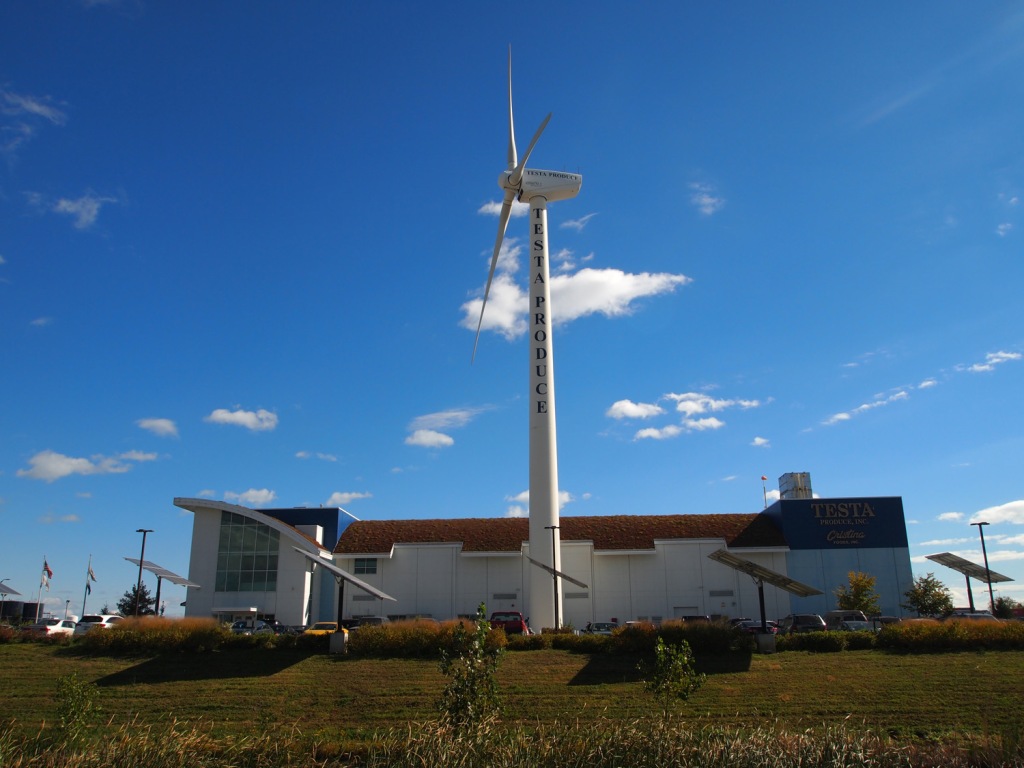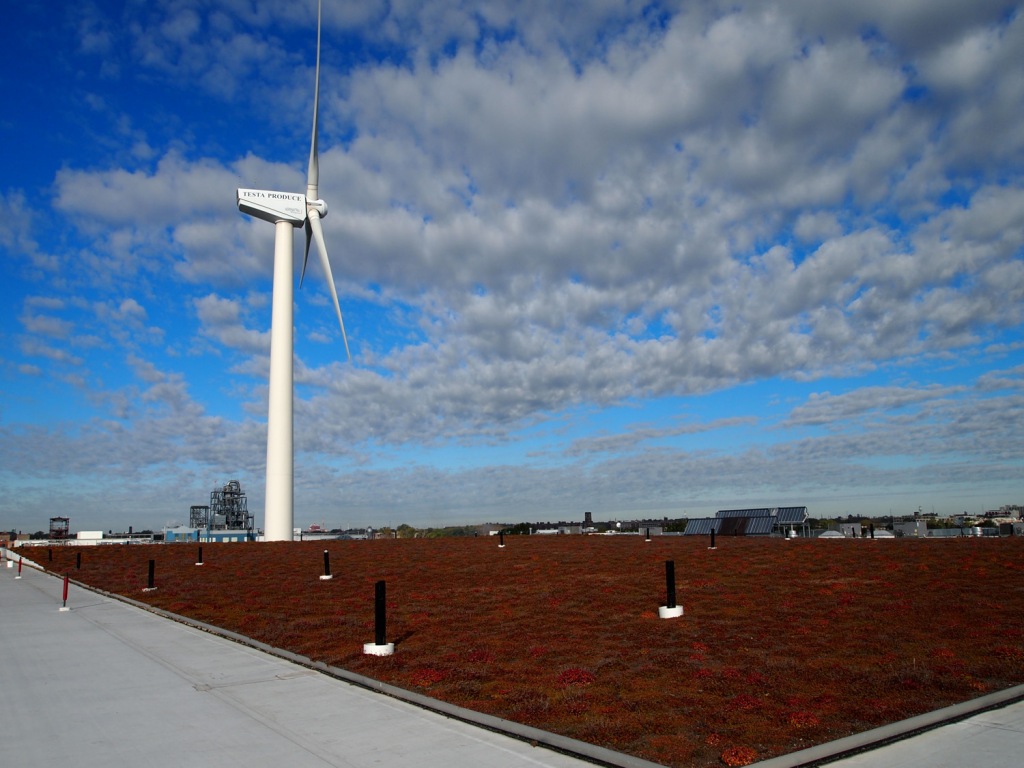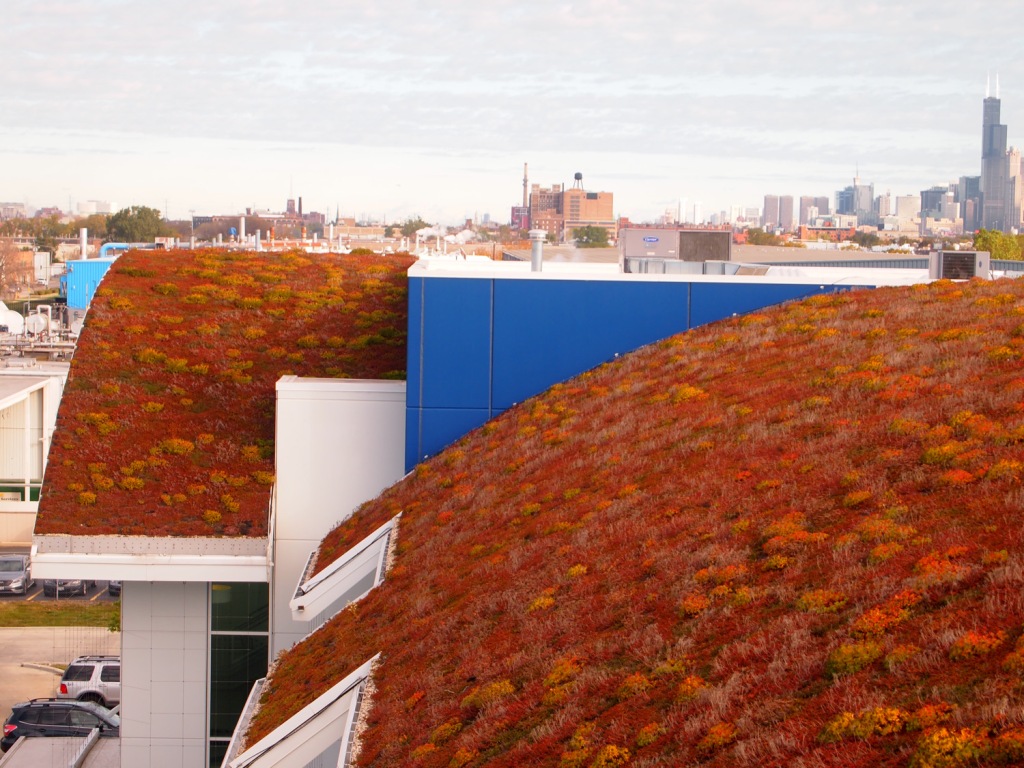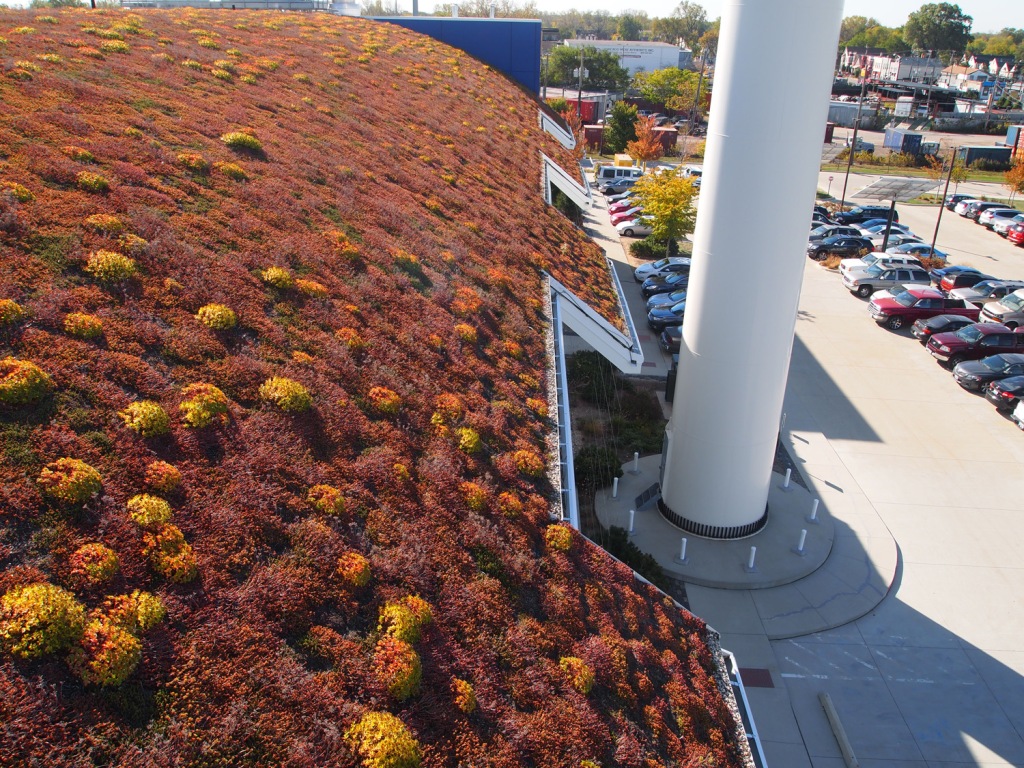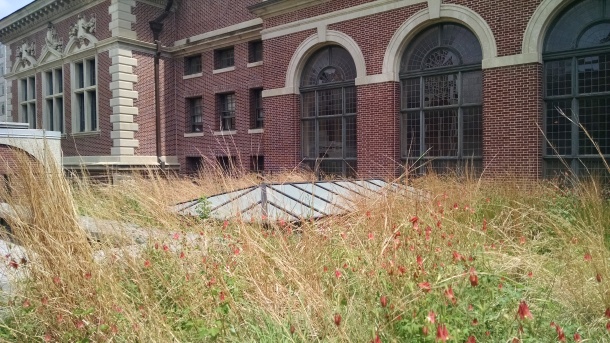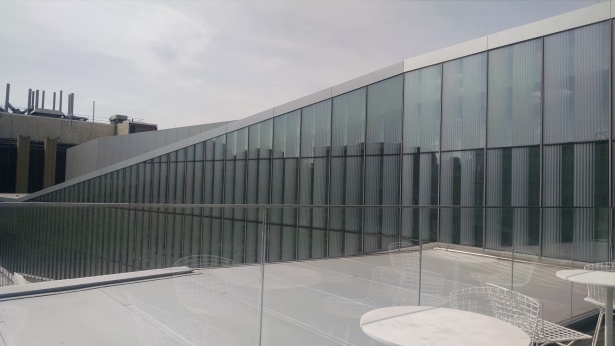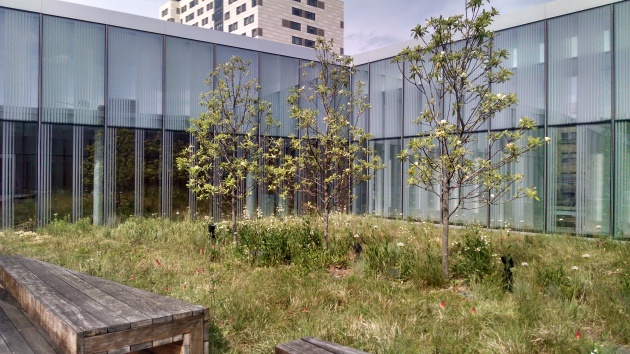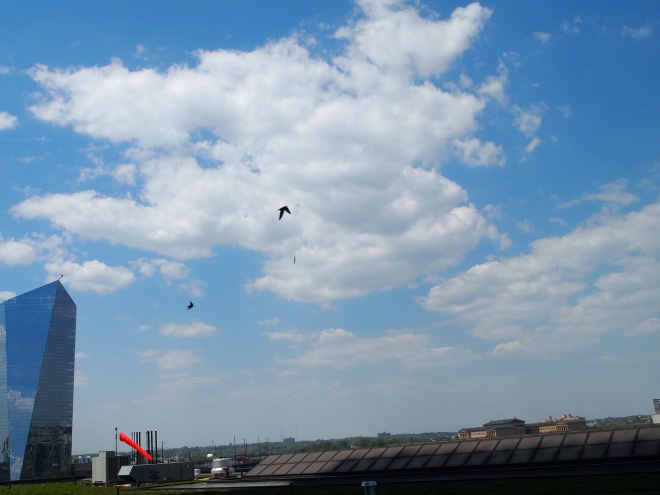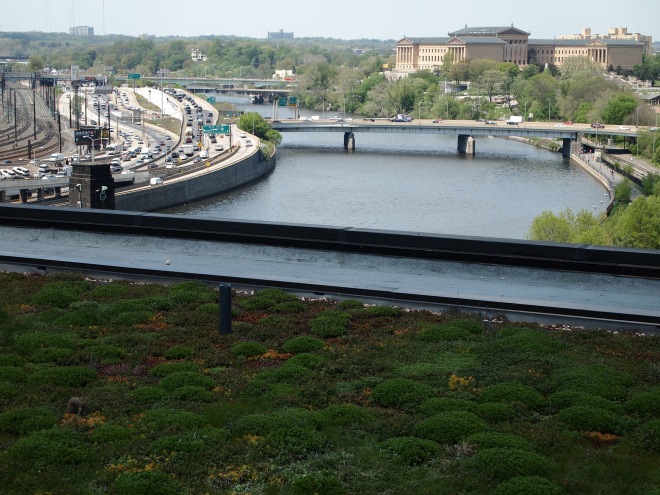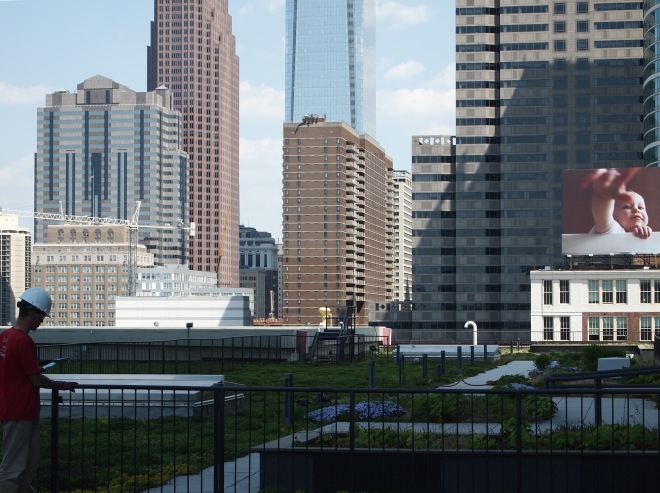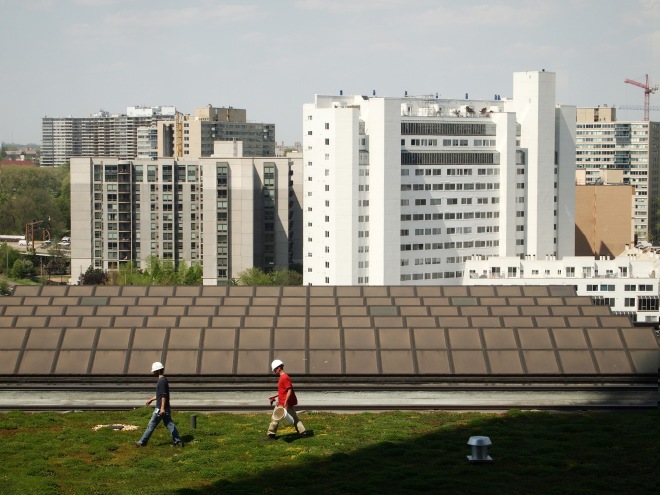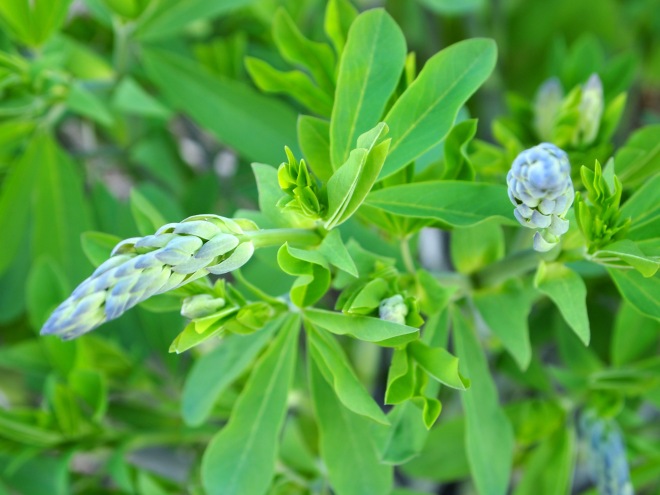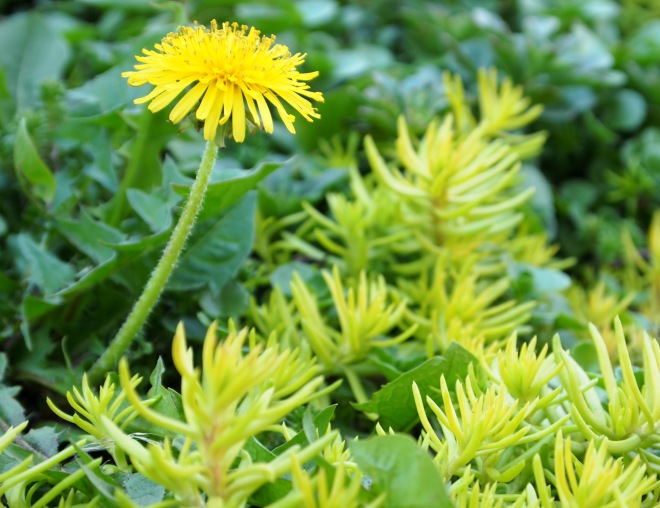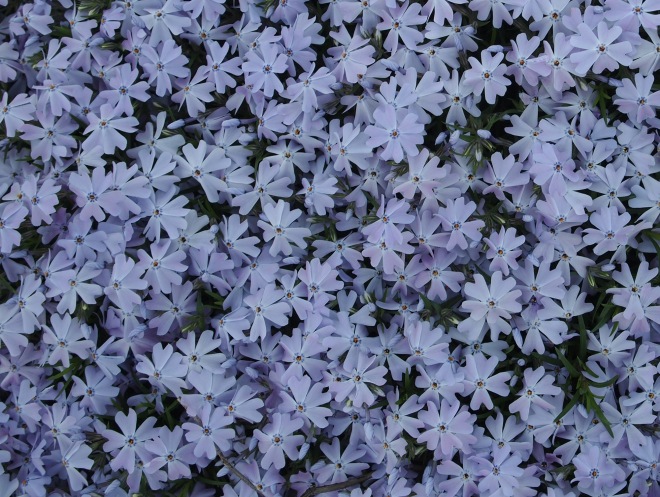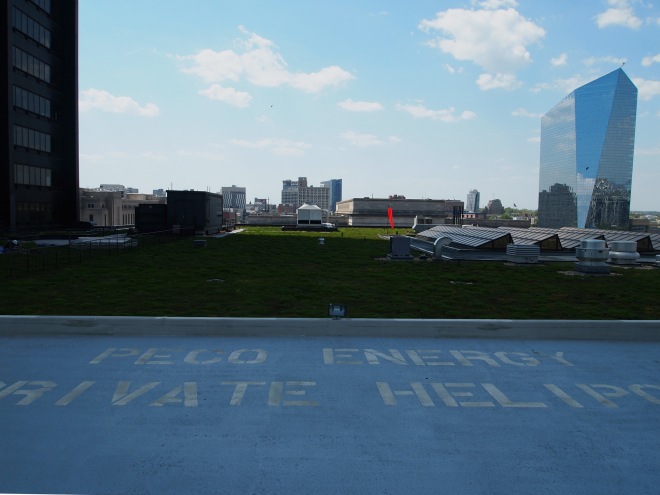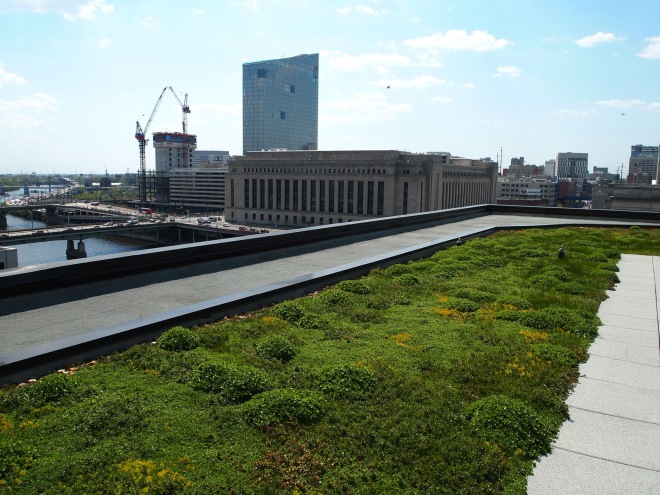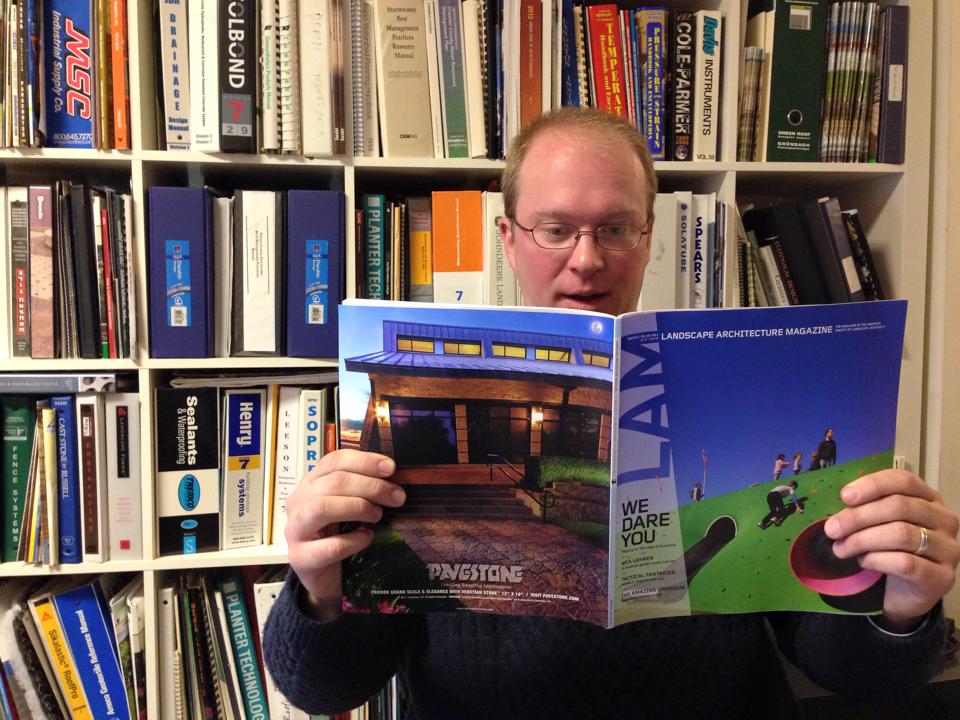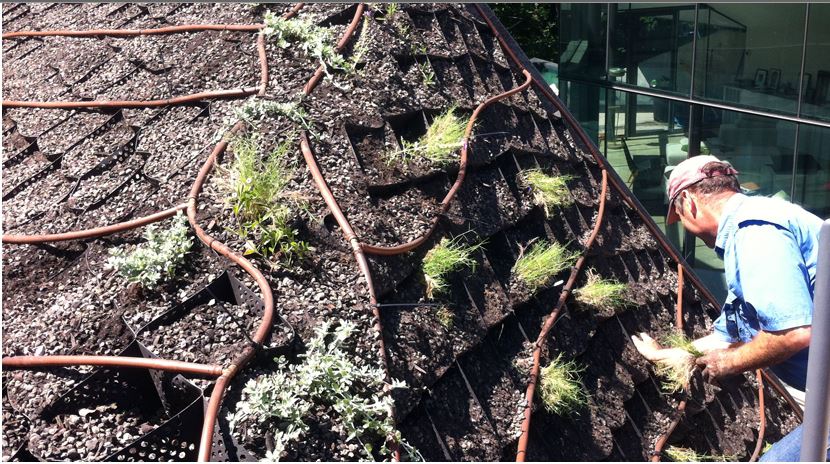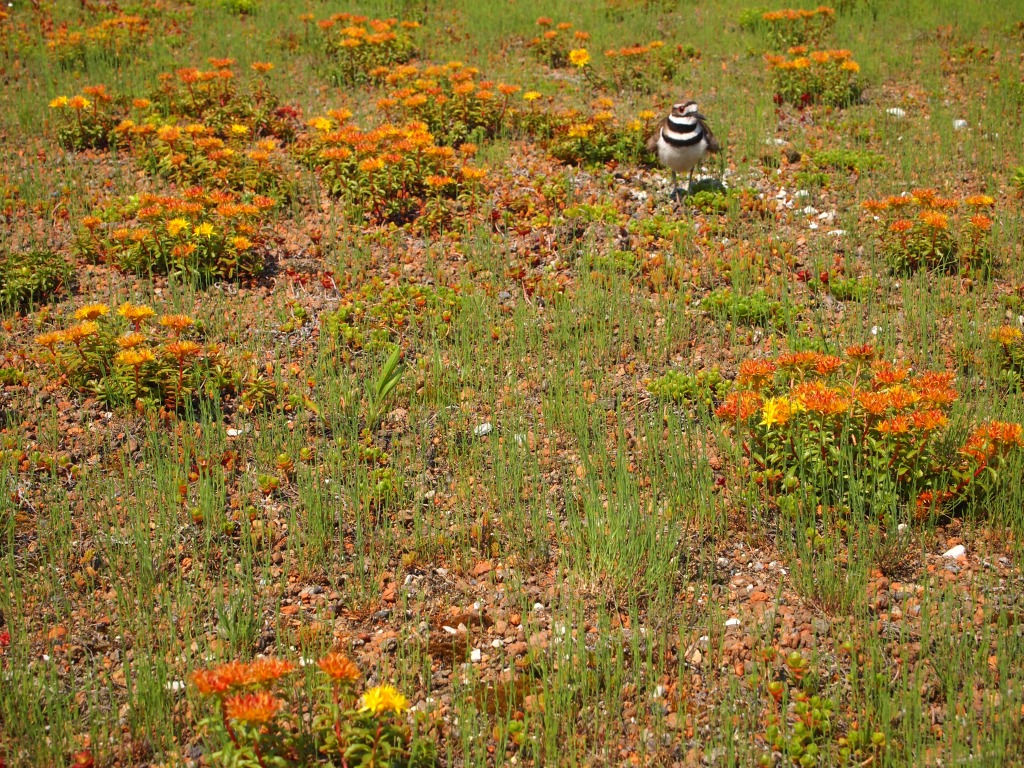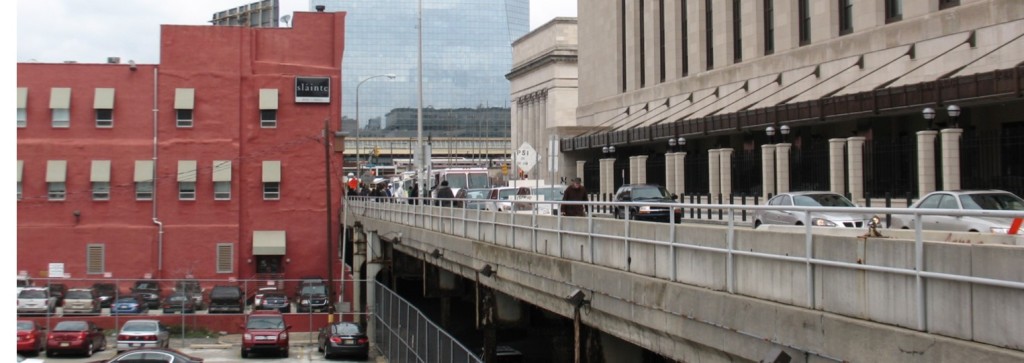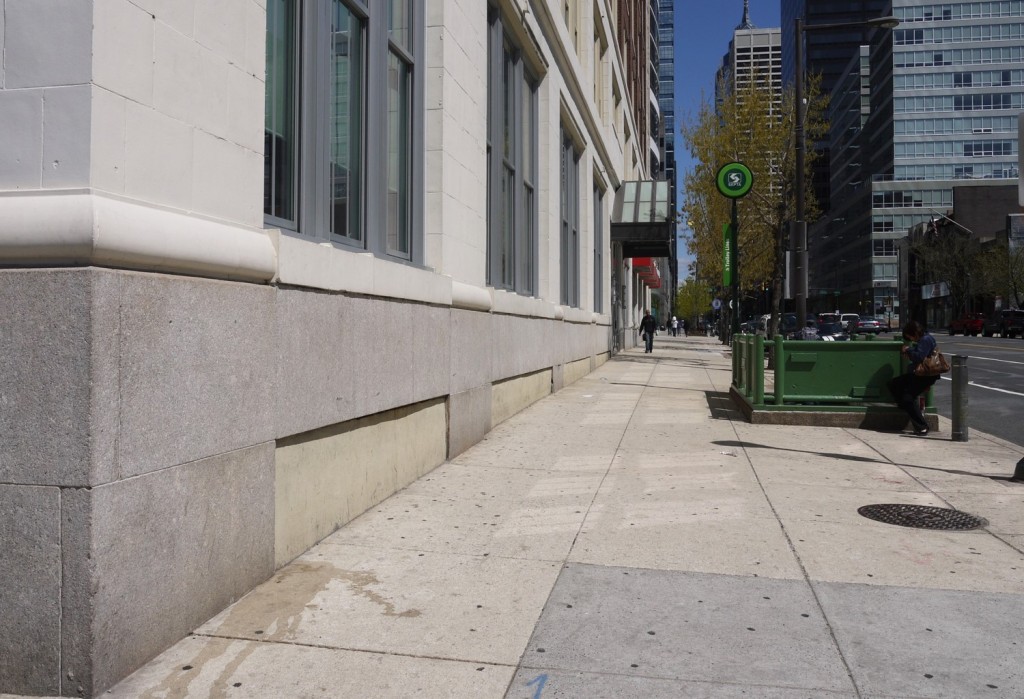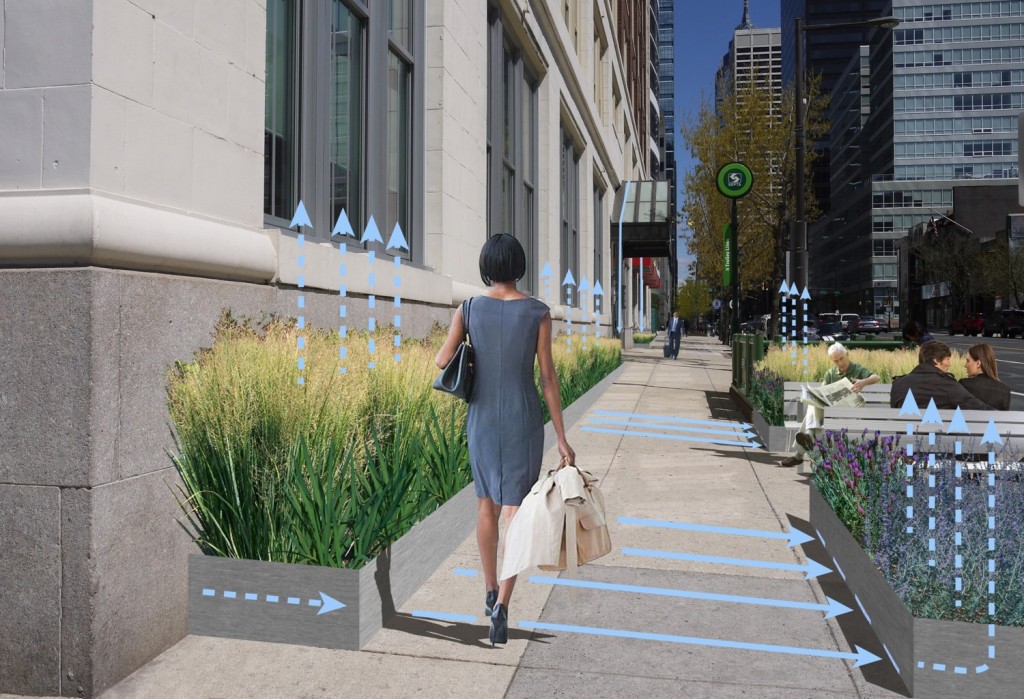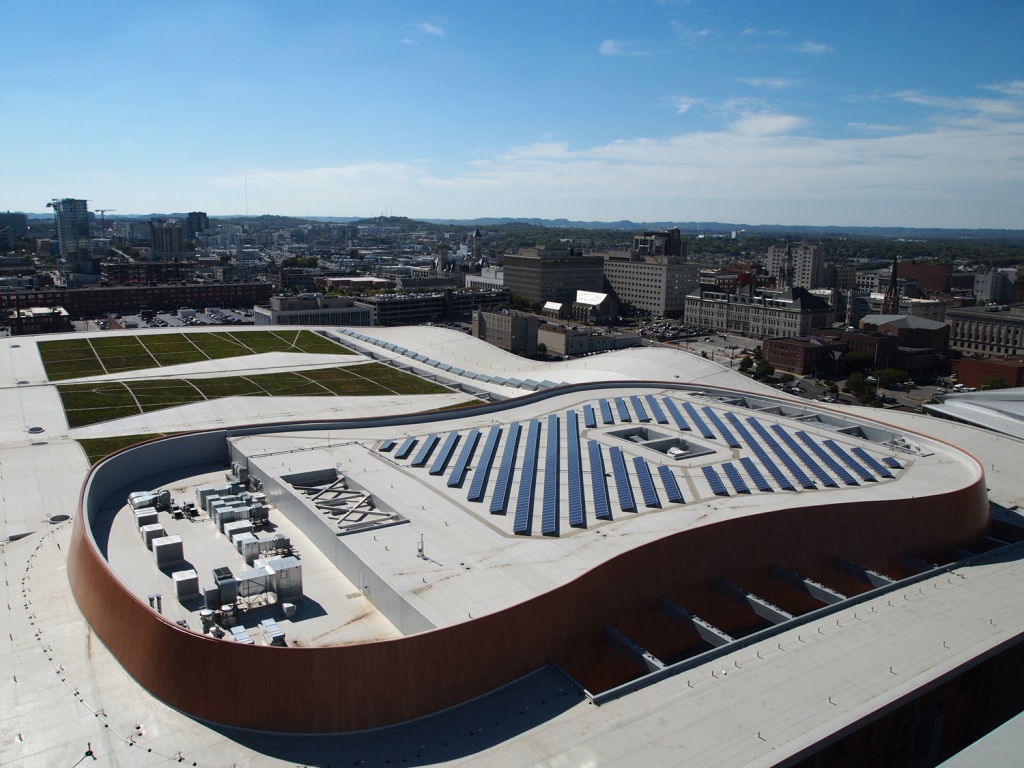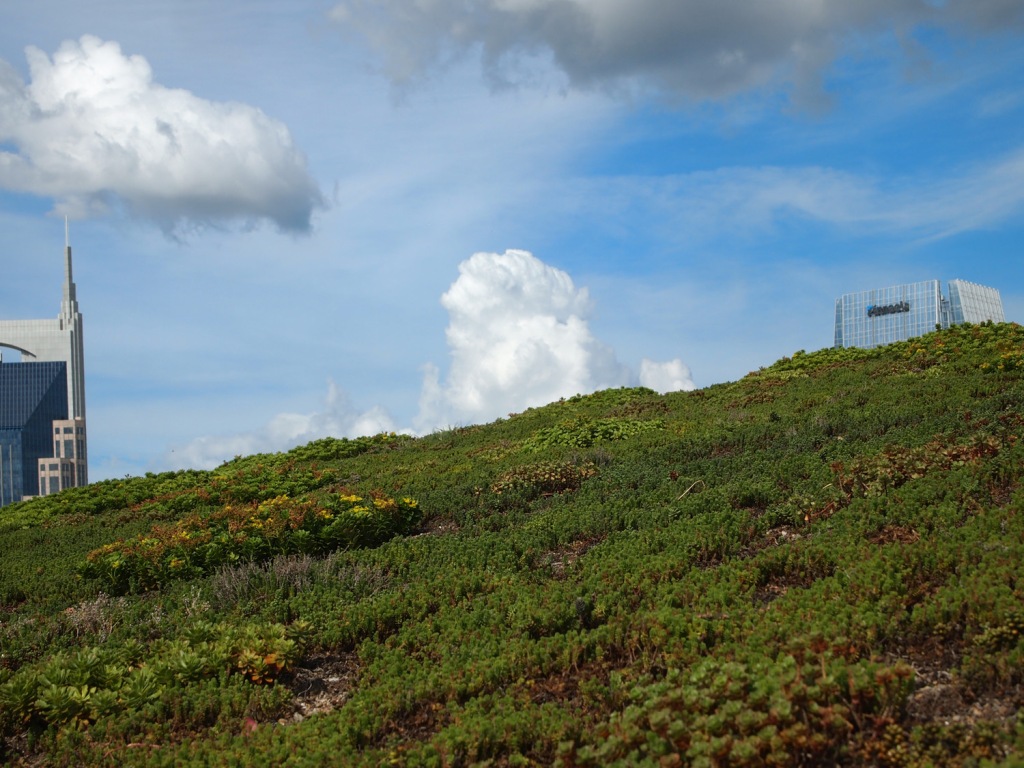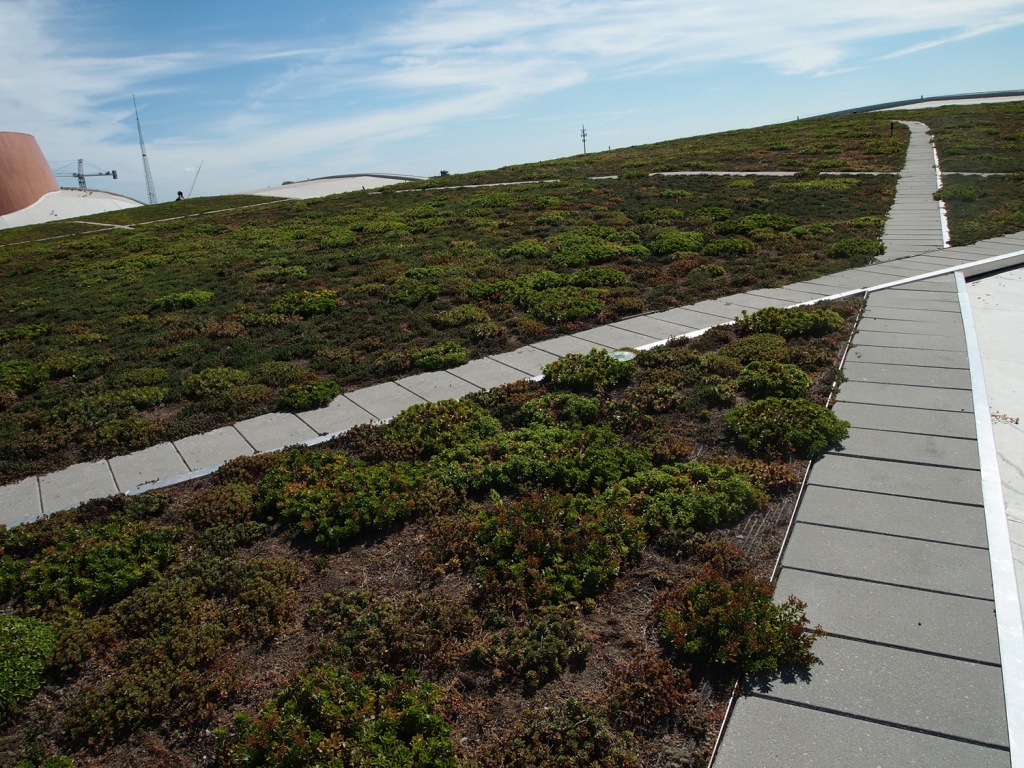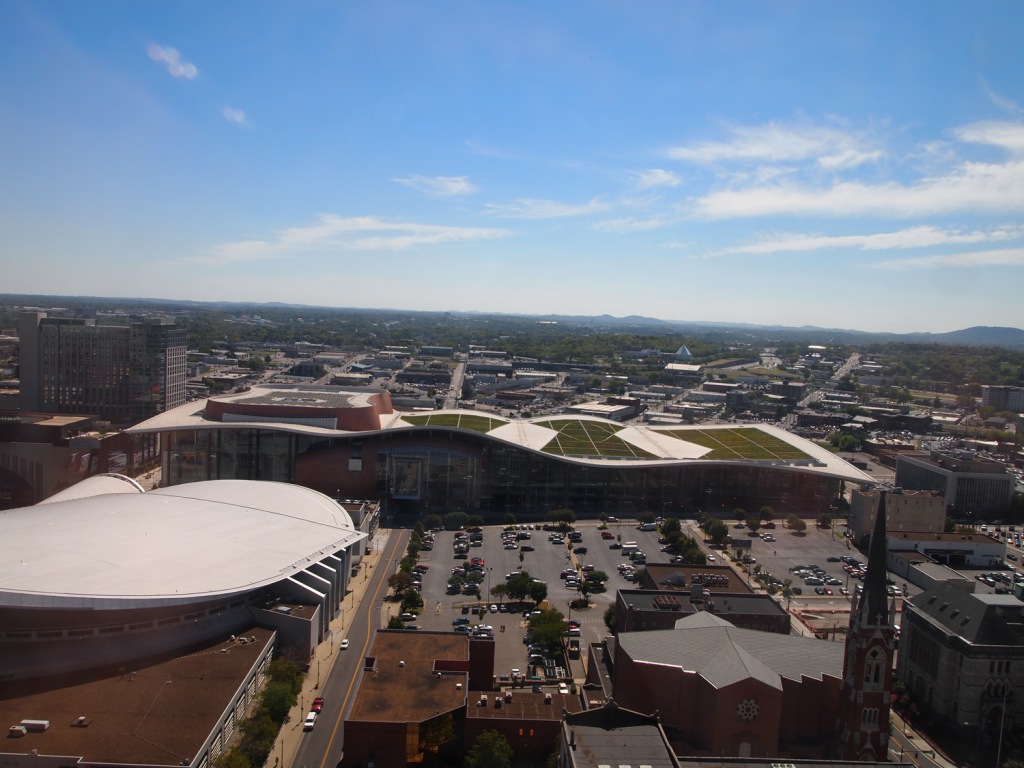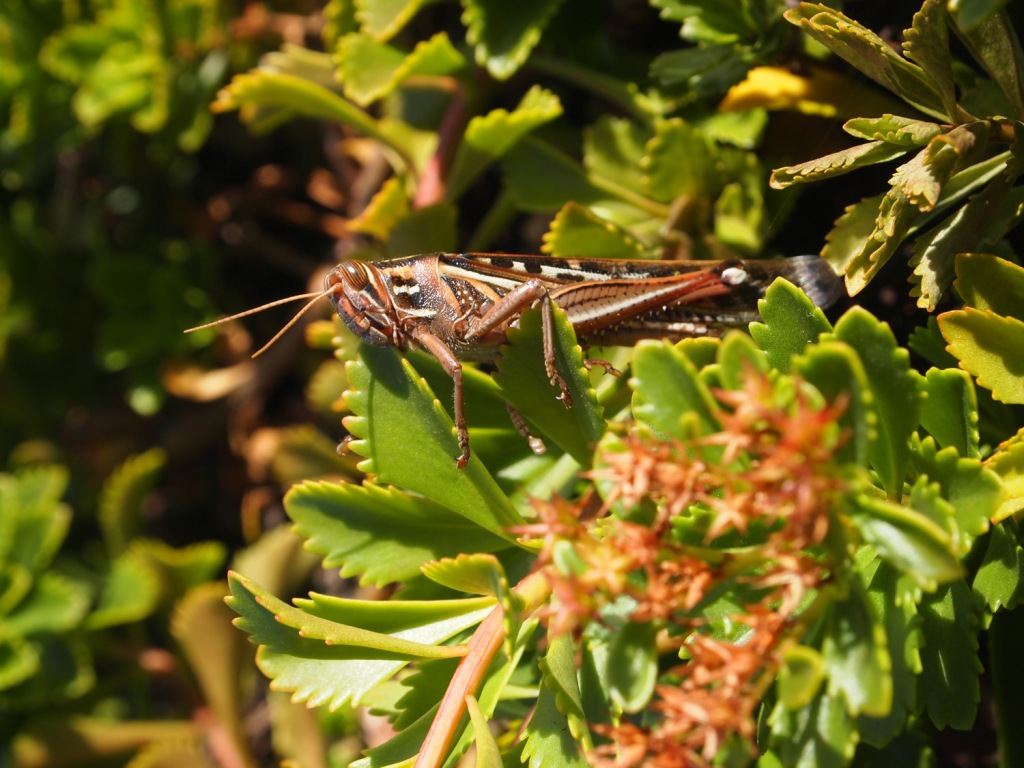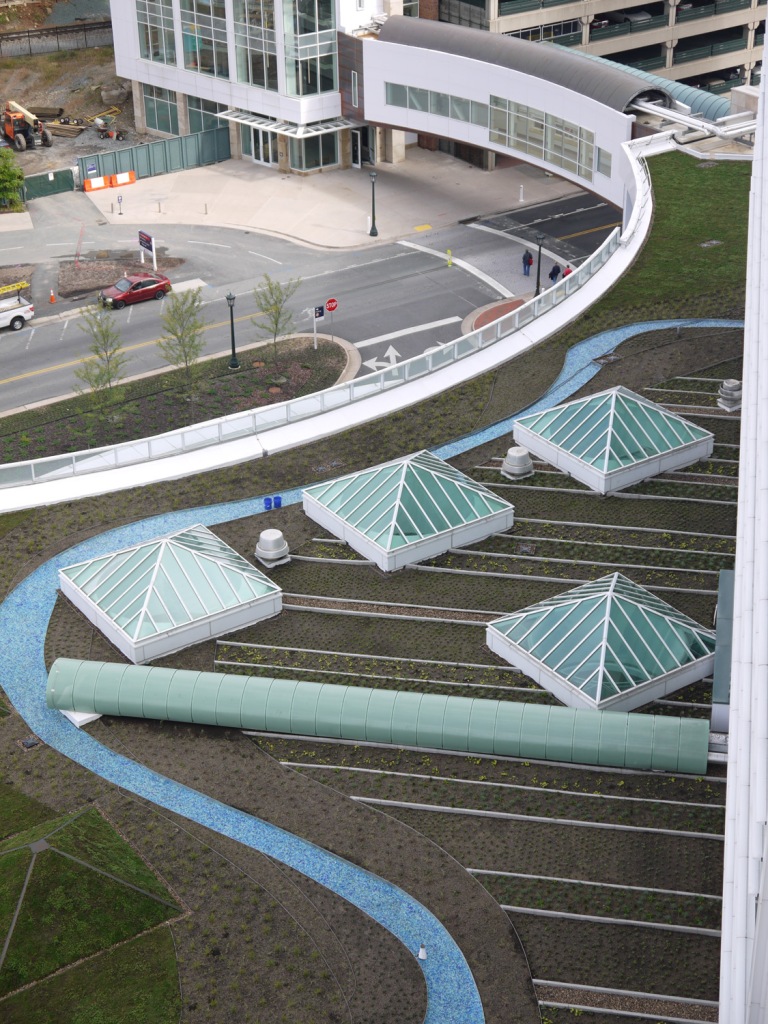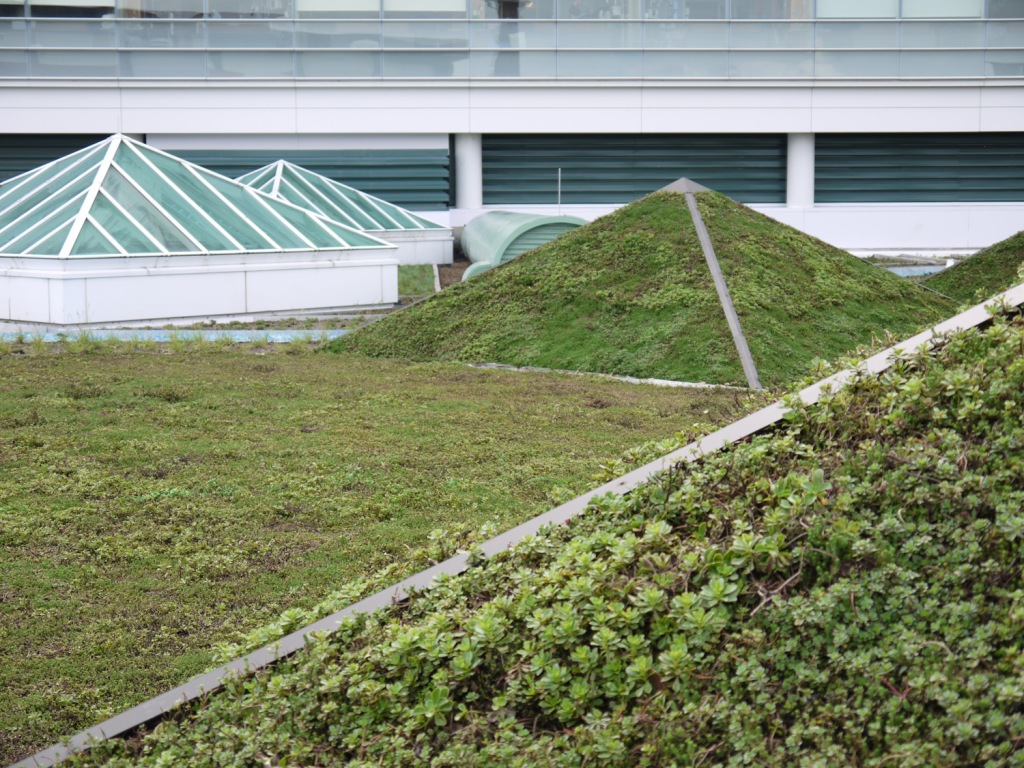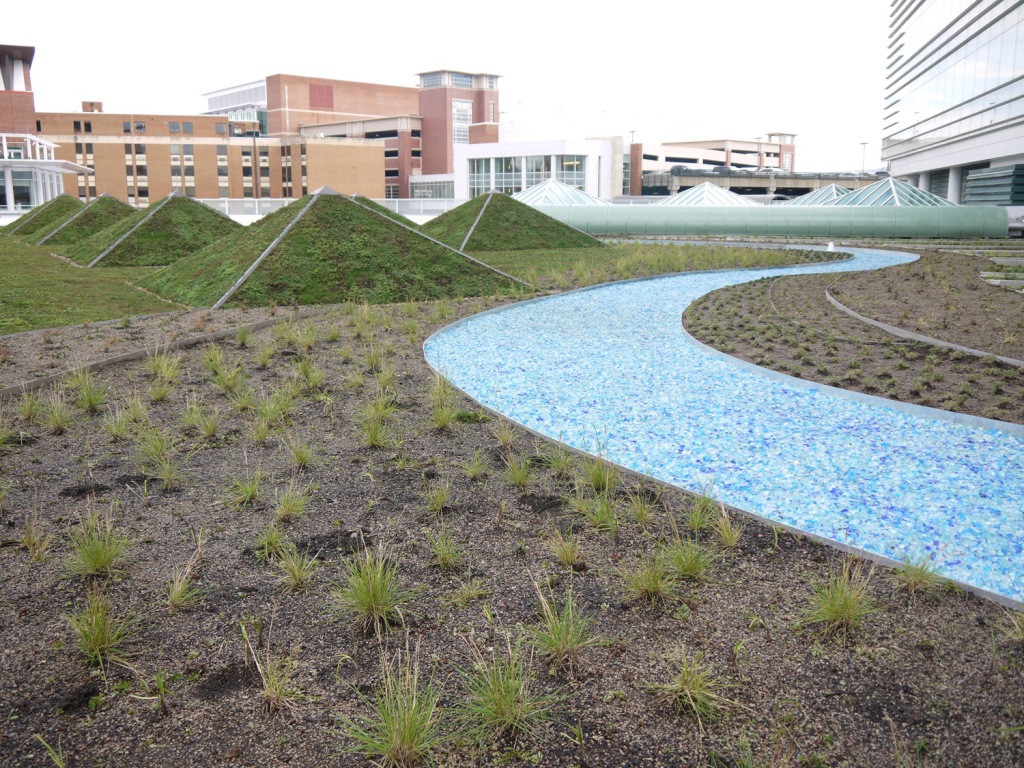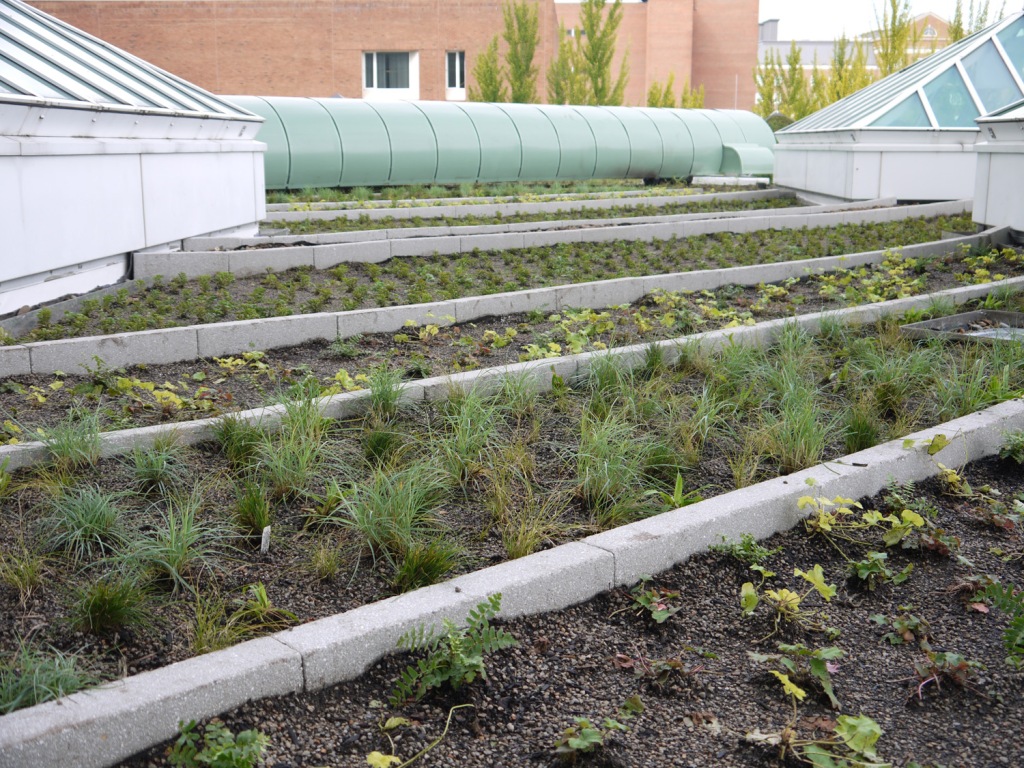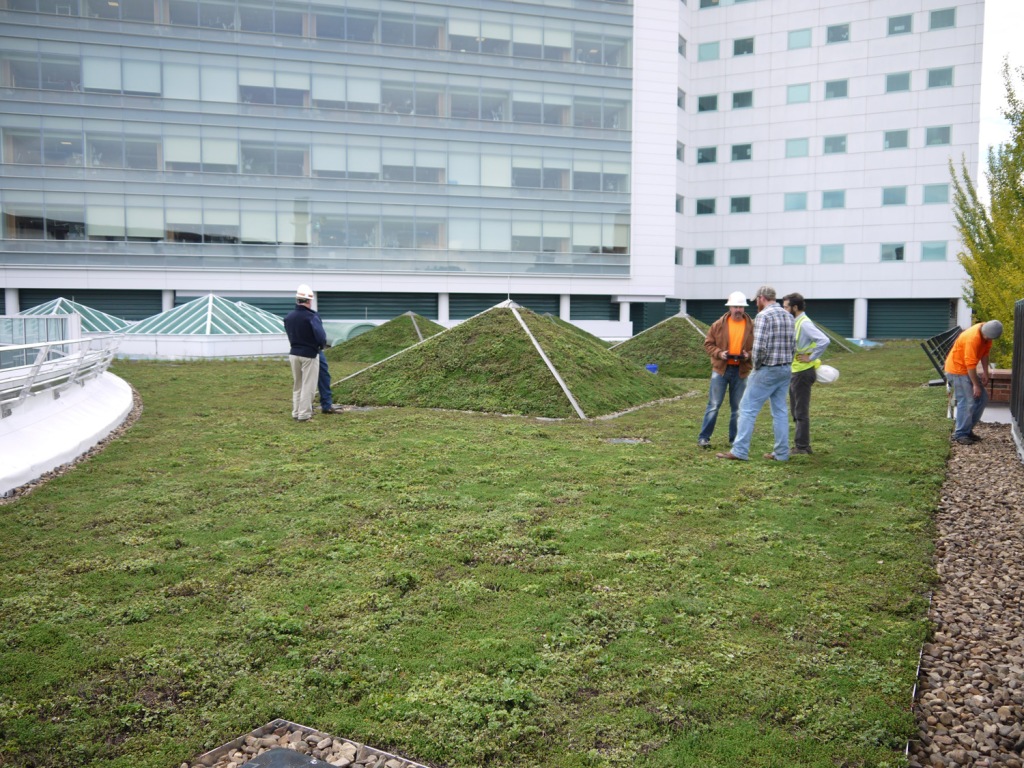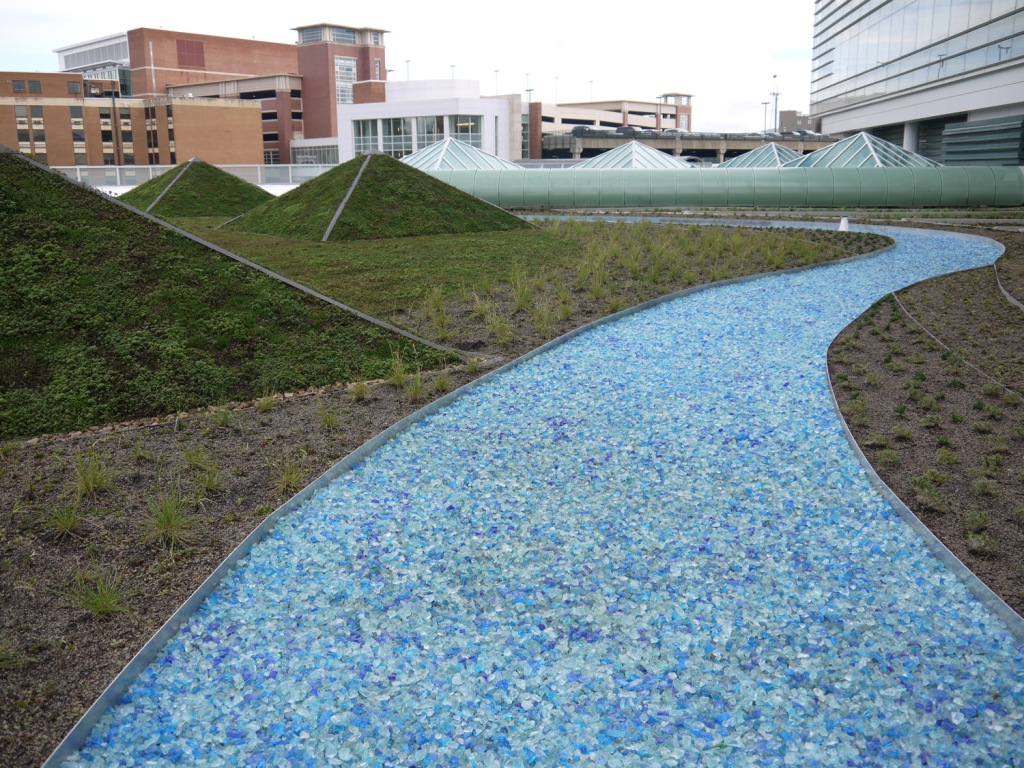Roofmeadow has been kicking around on rooftops since 1997, and, in that time, we have come across some curious finds. Because the winter chill has slowed our construction work, we thought we’d take some time to mine our photo archives and share a few unexpected finds with you.
WILD KINGDOM
Wildlife of all sorts tops the list of treasures on green roofs. Perhaps our favorite is the peacock on the Point Defiance Zoo in Tacoma, WA.
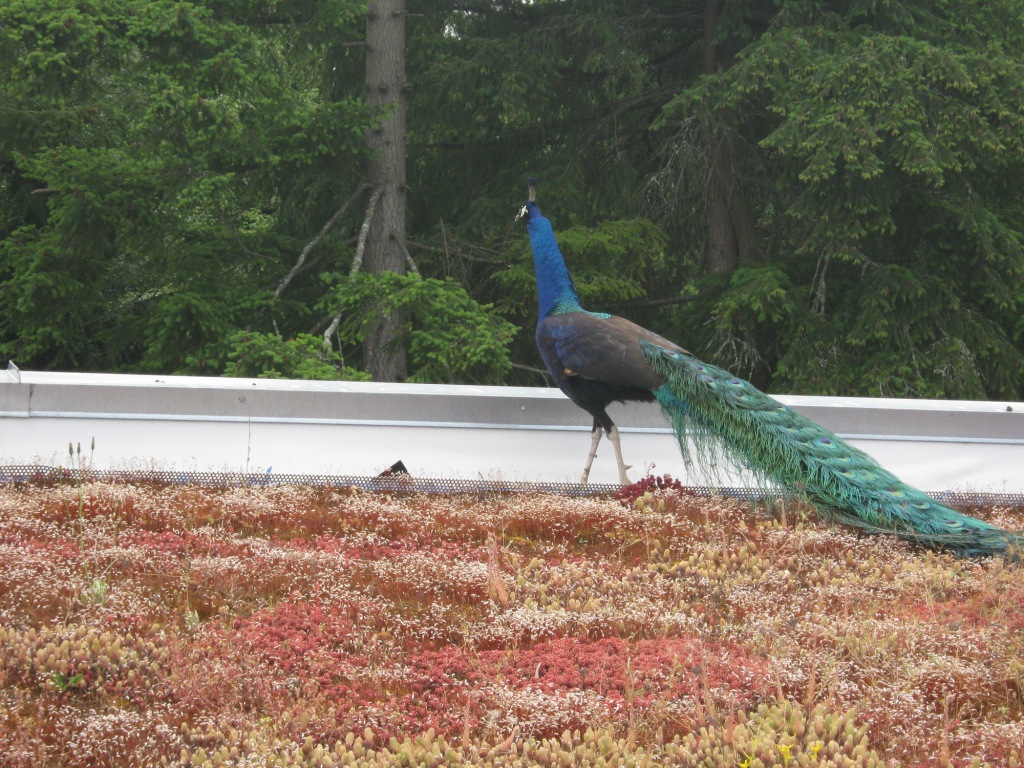
Extensive green roof with fancy fowl.
As you might suspect, given the chance, birds will favor a cool green carpet over a flaming hot black rubber roof. Killdeer in particular are partial to green roofs.
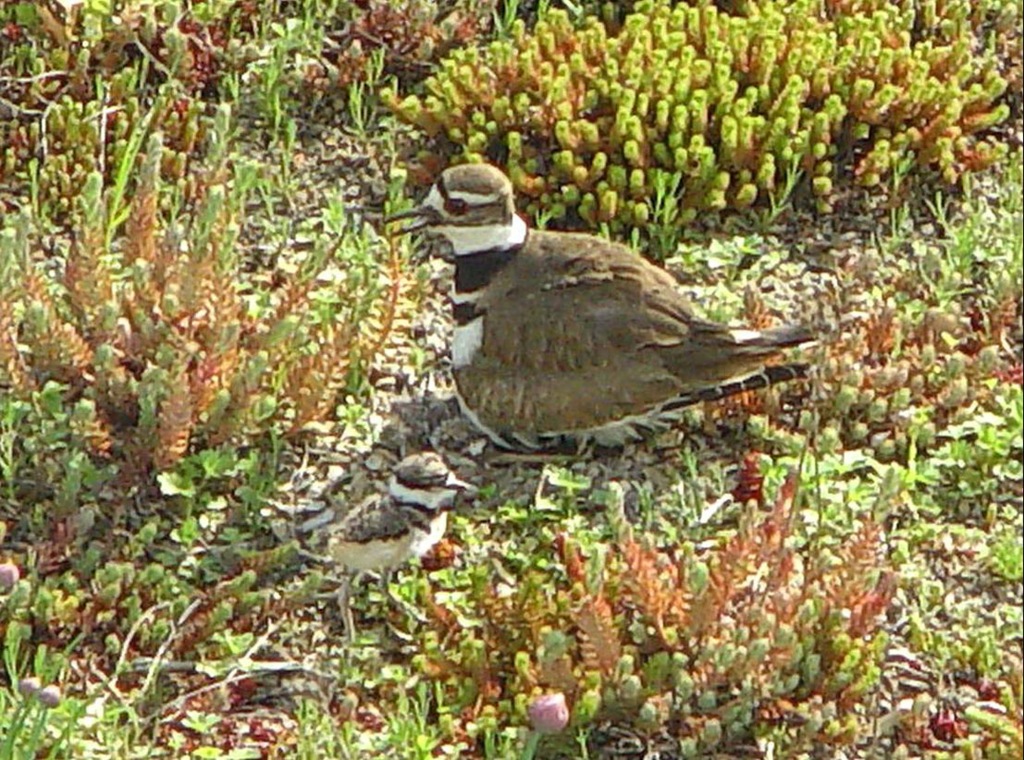
Killdeer and chick on a large Chicago green roof. Killdeer are partial to green roof media as a nesting habitat.
It’s always a thrill to spot a finch in the city. This finch photo below was captured in Philadelphia on The Radian green roof on Walnut Street during a routine inspection.

Finch feeding on an Echinacea purpurea seed head in Philadelphia, PA.
Predators stake their claim on green roofs too. While performing a routine maintenance visit Megan Welsh-Meier of Higher Ground managed to catch this hawk in the act of settling down to a meal.
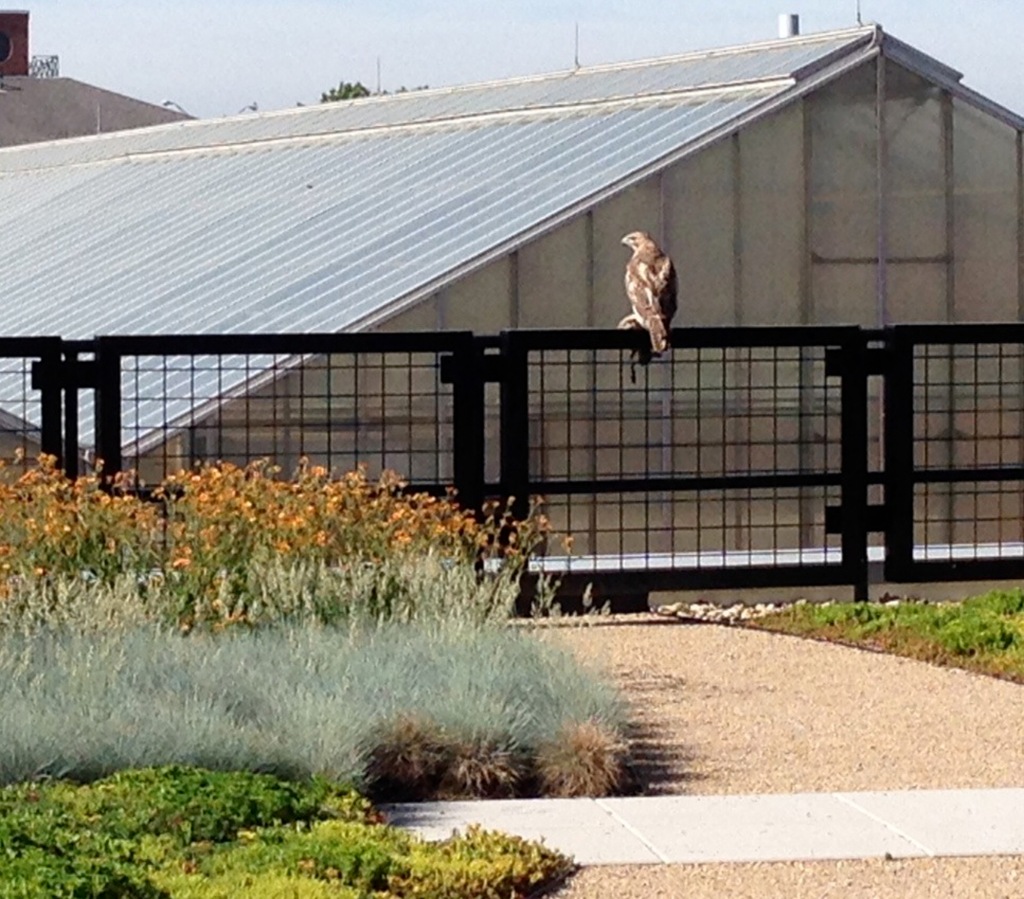
Hawk with a freshly caught rabbit in its talons at the Howlett Hall Ohio State University green roof. Image by Megan Welsh-Meier.
Although we assume that this rabbit in the hawk’s talons met its unfortunate end on the ground, we suspect hawks hunt on rooftops too. We hear that in Nashville, Peregrine falcons hunt for doves on the Music City Center green roof.
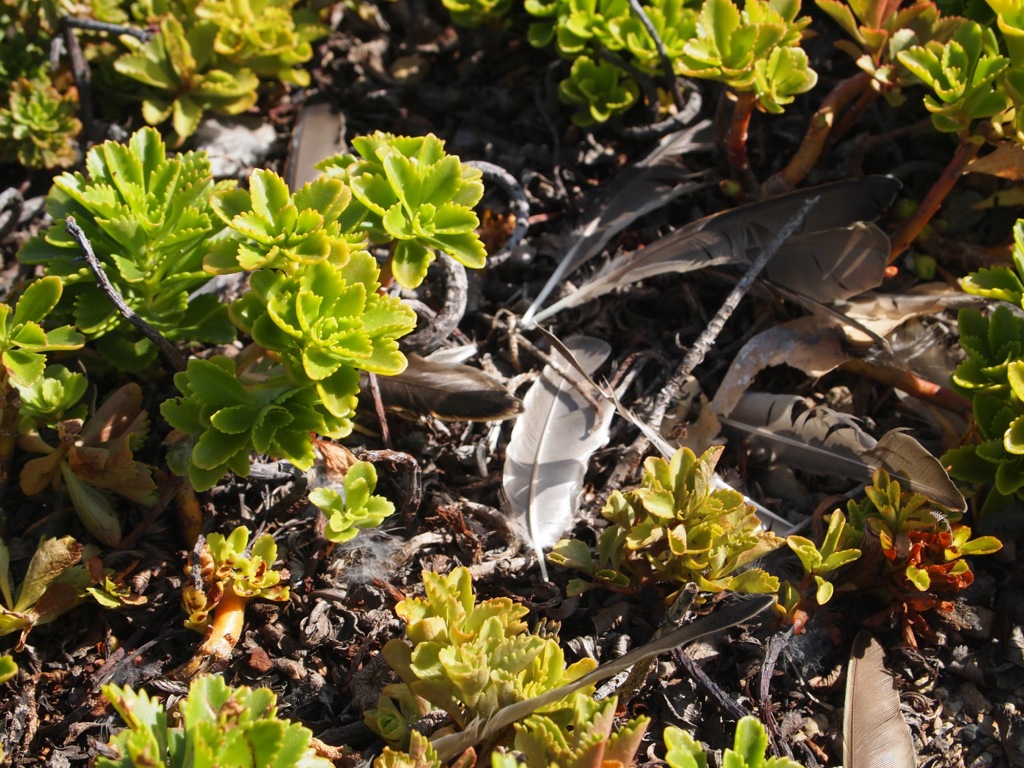
Dove feathers as evidence of falcons hunting and feeding on a green roof.
The Music City Center green roof is just under 4.5 acres.
A run-in with a fox on the SAP Expansion green roof (zoom in on the picture below) unnerved Tim, one of our civil engineers, until he realized his beady-eyed foe was, in fact, made of rubber and installed to scare off geese. (Disaster averted!)
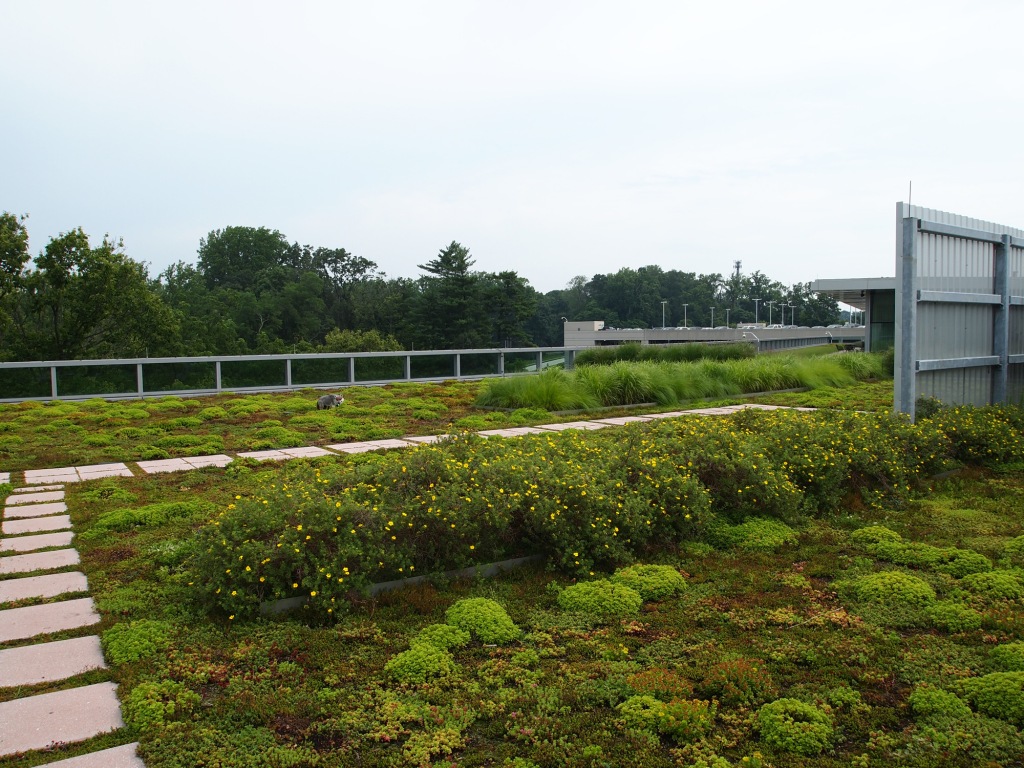
A faux fox on a Newtown Square, PA green roof.
When you amble onto the serene roof atop the American Swedish Institute in Minneapolis, you’ll catch your breath when you come face to face with the golden goat.
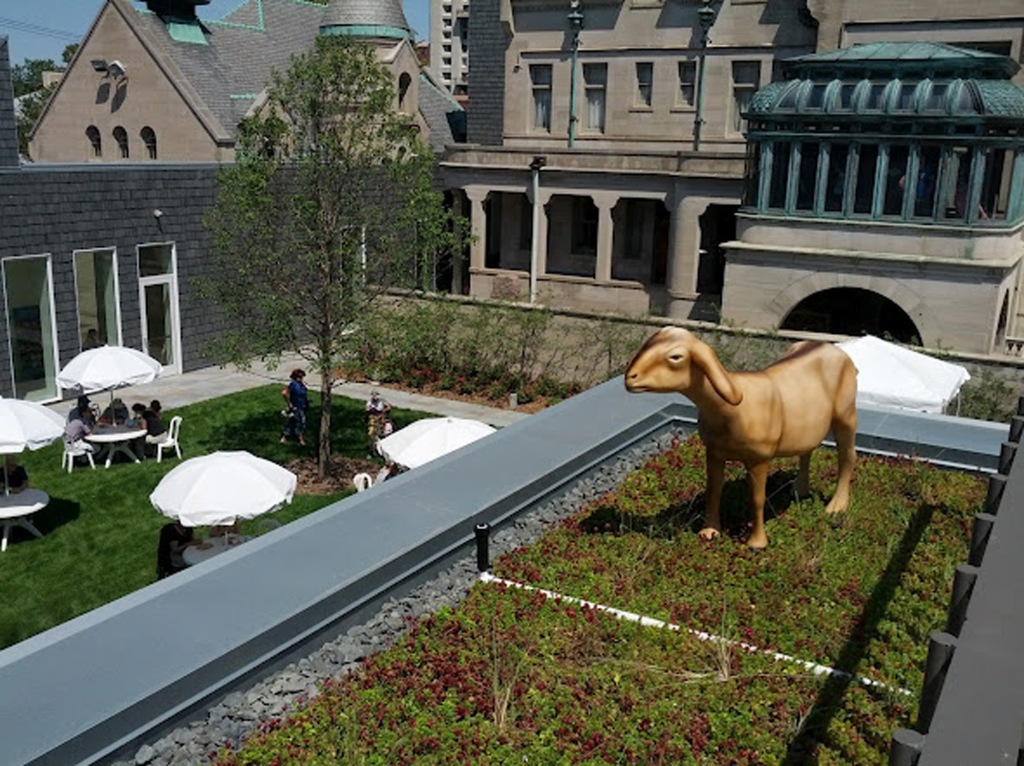
A fiberglass goat named Frejya on the American Swedish Institute green roof in Minneapolis, MN.
Green roofs foster biodiversity in the insect world too. Stewarding green roofs rewards you with unexpected and delightful opportunities to spot praying mantises, dragon flies, singing crickets, butterflies and, of course, bees (though, not as many as we’d like to see!).
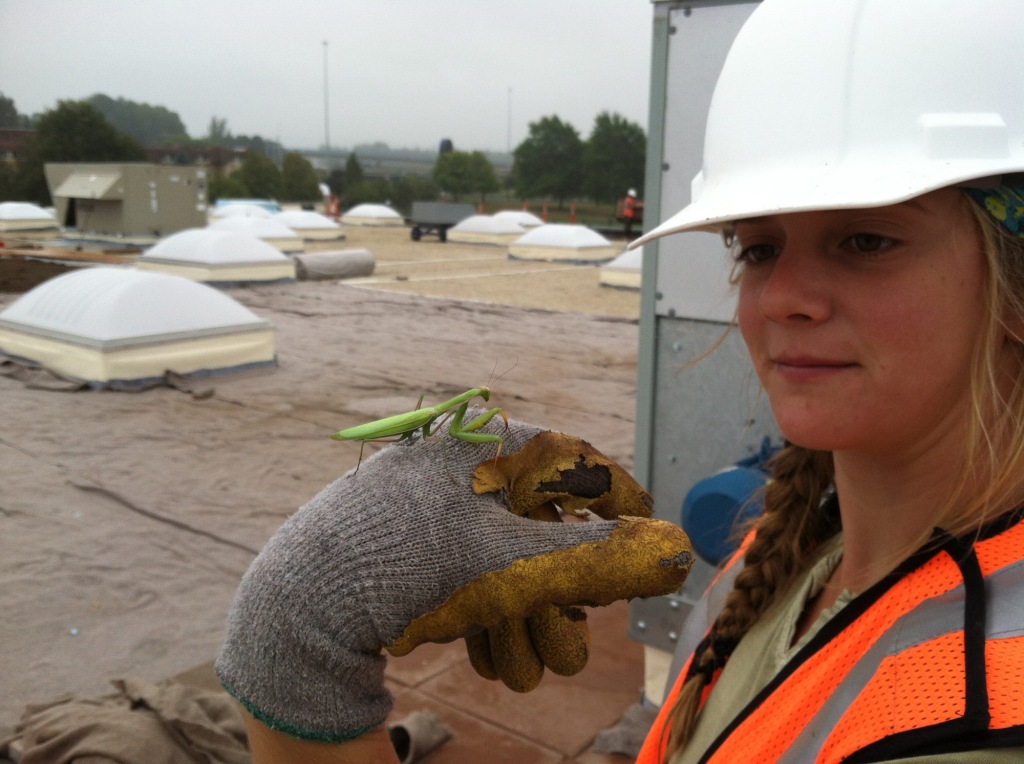
Praying mantis on a Portland, OR green roof during construction.
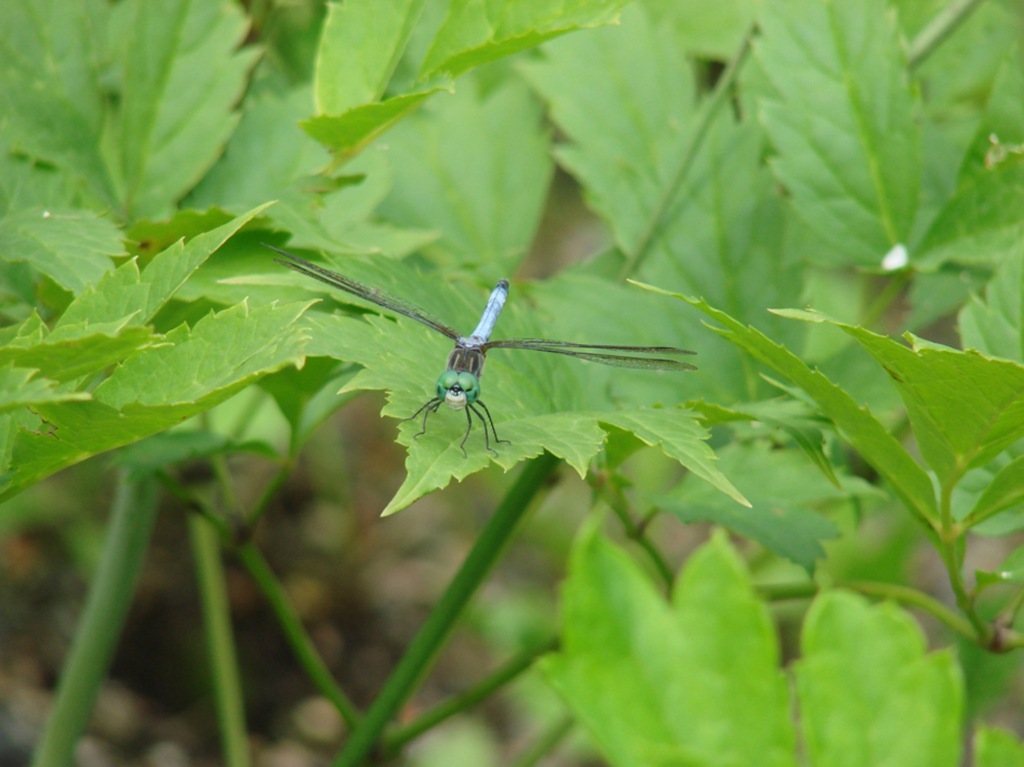
Dragon fly on a Heuchera in Philadelphia, at a University of Pennsylvania green roof. Image by Suzanna Fabry.
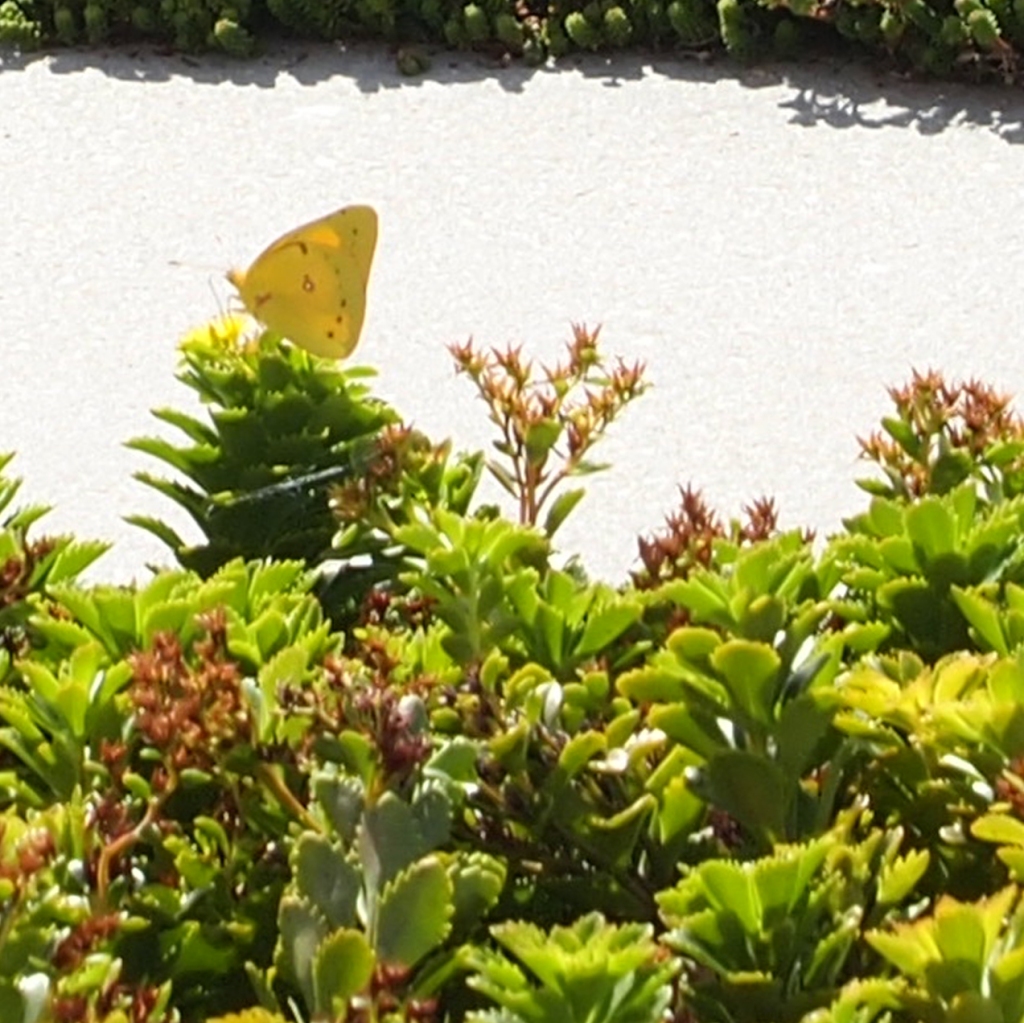
An Orange sulphur butterfly on the Music City Center green roof in Nashville, TN.
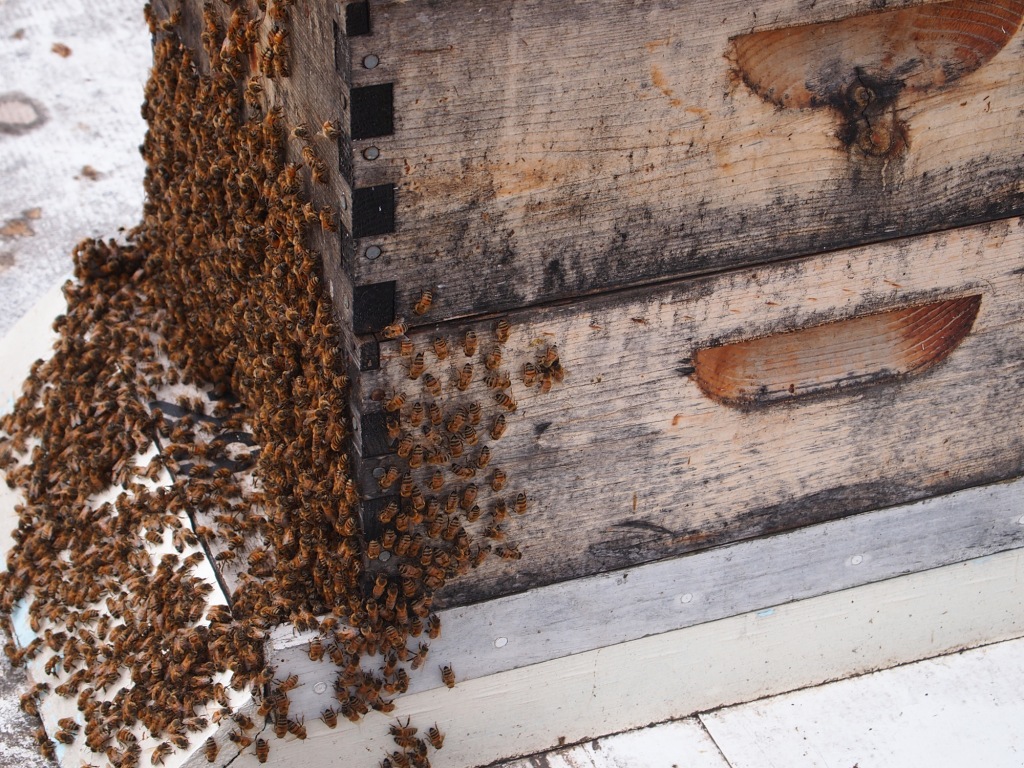
Honey bees swarm their Chicago City Hall green roof hive.
PLANT INVADERS
Stewarding green roofs involves management of plant volunteers – some are welcomed; others are not. Among those that have hitchhiked their way across the USA, we’ve been surprised by stands of corn, weed (yes WEED, which we promptly removed) ferns and native perennials on extensive roofs.
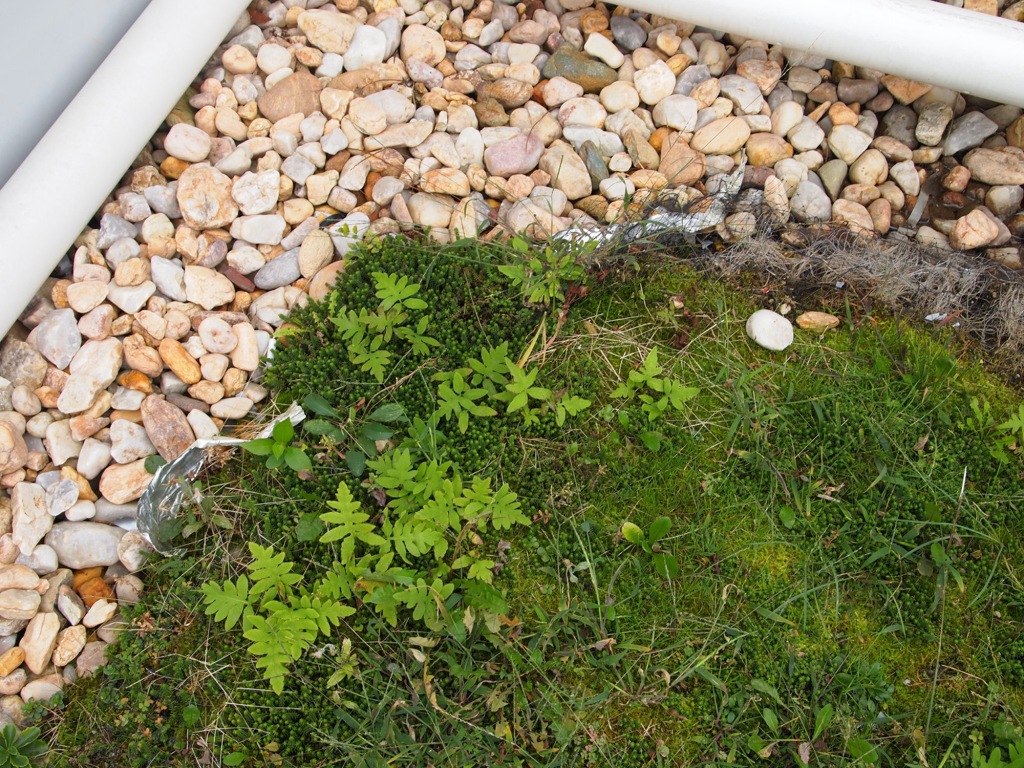
Volunteer Sensitive fern and moss on the Temple University Architecture Building in Philadelphia, PA.
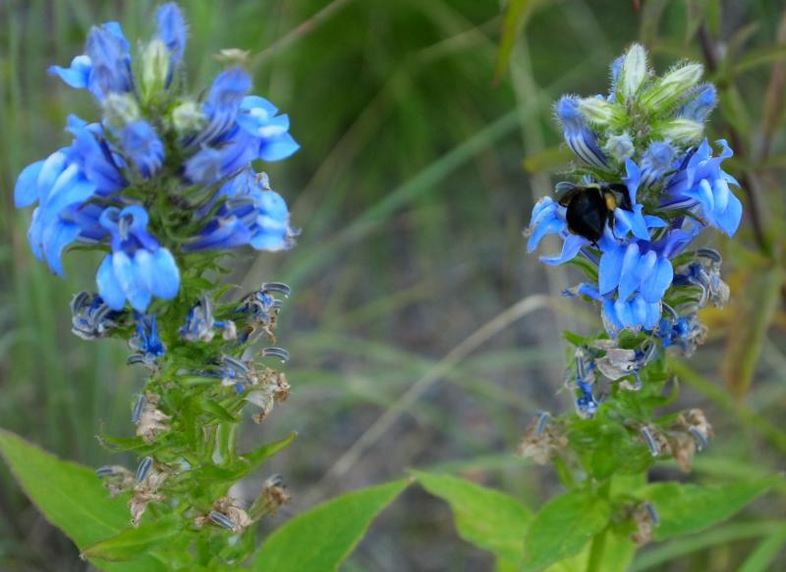
Volunteer Great blue lobelia (a native perennial) with Bumble bee at the Krishna P. Sign Center for Nano Technology, University of Pennsylvania in Philadelphia, PA.
A CLASS ALL BY THEMSELVES
Among all the flying creatures we have witnessed on green roofs, perhaps none tops this behemoth co-star of the NBC TV series, Allegiance. The helicopter perched on the PECO green roof in Philadelphia, PA is featured on the Allegiance episode that airs this Thursday at 10:00 p.m. Tune in to see our green roof’s starring role!
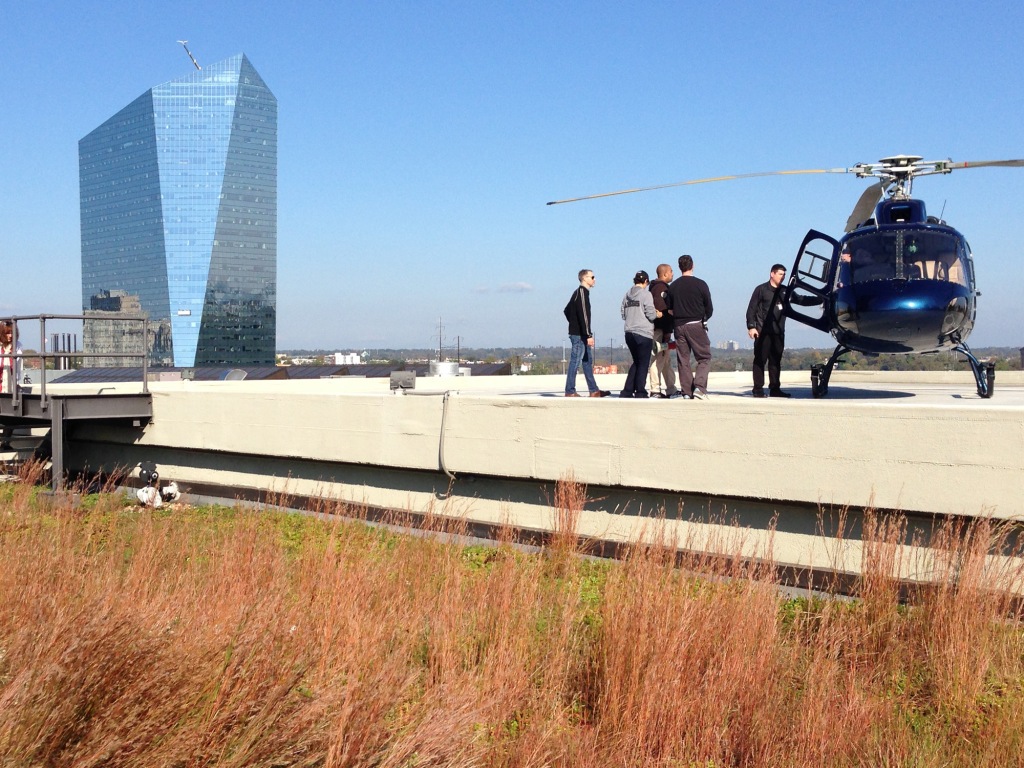
The Allegiance crew on the PECO green roof filming an episode that will air this week.
Landscape Architecture Magazine
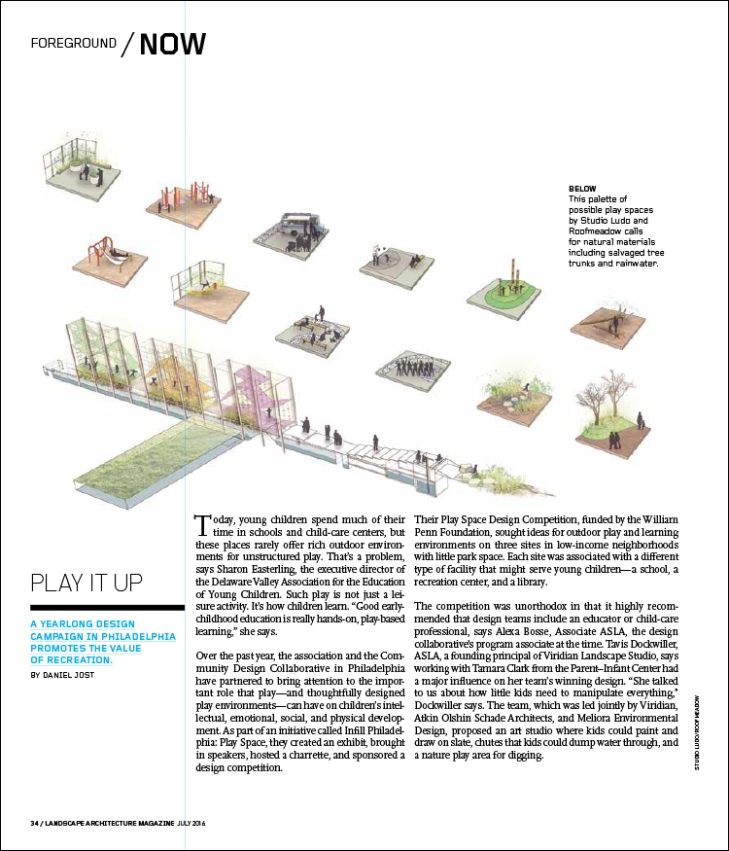 A yearlong design campaign in Philadelphia promotes the value of recreation.
A yearlong design campaign in Philadelphia promotes the value of recreation. 
